

Your Guide to Choosing the Best Yacht Tender

A yacht tender is your ticket to freedom on the water. Once you drop anchor, it’s your ride to the fun and adventure that inspired you to buy a boat in the first place. Just imagine watersports, exploring, scuba diving, snorkeling and, of course, just relaxing in the warm sun!
Here’s a quick secret — your yacht tender is the most fun boat you’ll ever own.
We think a dinghy should not only reflect the beauty and precision of a yacht but also have the power and functionality to push fun to the limit. Is there any better way to celebrate dropping anchor than a cold drink and a zoom on the dinghy? Please, let us know if you find something.
Having the right tender lets you enjoy your boating experience to the fullest. There are a few things to consider when picking the best yacht tender for you, so we made this guide to help you through the process. We’ll go over:
- The benefits of rigid inflatable boats
- Pricing of small yacht tenders
- How to pick the right dinghy
- A brief overview of our models
There are lots of yacht tender options out there, and it’s essential to find the best one for you. Whether you’re looking for the best small boat or superyacht tender, we’ll give you the information you need to find the perfect dinghy for your life on the water. Read on to learn how to pick the perfect yacht tender.
The Benefits of Rigid Inflatable Boats
Rigid inflatable tenders have become the go-to choice for boaters. Here’s the deal.
Safety is always the first priority when you’re on the water. With the ever-changing conditions of an ocean environment, you need a tender that’s prepared to handle it all. There’s a reason the United States Coast Guard, military and police use rigid inflatable boats — they’re extremely seaworthy. The United States Navy describes rigid inflatables as extremely fast and buoyant. It employs them for Navy SEAL extractions and in intense ocean conditions.
Virtually unsinkable and super tough, rigid inflatable boats are hands-down the best choice for those who desire small yacht tenders.
What Do You Mean by Rigid Inflatable Boat?
Commonly called a RIB, a rigid inflatable boat has a hard hull and inflatable tubes for sides. This construction gives rigid inflatables the best of two worlds — they have the indestructible v-hull and tracking of a hard boat and the shock absorption of an inflatable boat. They’re as hardy as they are versatile. For example, we offer Navy-tough tenders with beautiful European craftsmanship that you can’t find anywhere else.

In addition to their durability, RIBs offer many other advantages. Here are a few more reasons why RIBs represent a smart investment.
RIBs Provide Stability
In a rigid inflatable tender, there’s little risk of tipping over because the inflatable tube and hard hull combination provide excellent stability, which is great for loading and unloading your family and your toys.
Also, the inflatable tubes significantly increase a tender’s capacity rating, meaning you can safely fit more passengers and gear on a RIB than on a hard dinghy. Known as the “Safe Working Load,” or SWL, this capacity is detailed by the manufacturer. To calculate the maximum number of people who should be aboard a small vessel, multiply a vessel’s length by width and then divide the result by 15.
RIBs Demonstrate Impressive Efficiency
Inflatable dinghies are much lighter than hard tenders. Weighing less means they’re much more efficient, and you can pack in a lot more adventure with the same amount of gas. Skip the line at the fuel dock, and head straight into your day.
RIBs Have Exceptional Safety
A great benefit of having an inflatable tender is you don’t have to worry about damage to your luggage or your precious cargo. We all have all experienced that awkward misstep aboard boats. When everything and everyone is moving around in the ocean, you may have trouble not fumbling every once in a while. It’s much nicer to catch yourself on the cushioned tubes of an inflatable than on hard fiberglass — we’ve tested this one!

When you’re going fast and having fun on the water, you don’t want to worry about safety. Knowing you’re in the safest dinghy lets you relax and focus on your adventure.
The United States Coast Guard has specific safety requirements for all recreational vessels. Adhering to these not only keeps your tender legal, but it also keeps you and your family safe. You can follow a simplified list of requirements.
It’s Easy to Use RIBs
For everyday boating operations, having an inflatable-sided dinghy is the best. You don’t have to deal with fenders or worry about all the bumps and nudges like on a hard tender.
Getting a spot at the dinghy dock often means playing bumper boats. If you have a dinghy with inflatable sides, you don’t damage other vessels, the dock, or your dinghy. Not to mention if you’re dropping someone off or tying up on your yacht, you can leave your dinghy unattended without worrying about damage to your boat.
Sometimes, it’s easier to tow your tender than it is to put it away — like if you’re changing to a nearby mooring or going to a secluded cove for the day. And unlike a hard tender, an inflatable can bounce off your yacht without damaging anything.
Anyone Can Maintain a RIB
Rigid inflatable boats need a lot less maintenance than hard tenders, partially because they’re less likely to get damaged in the first place. Inflatables don’t have fiberglass siding that can get cracks or holes, and their parts are easily replaceable. We offer replacement parts through our website and also have free online owners manuals for every model we carry.
RIBs are also much easier to keep clean than the scuff-prone fiberglass of hard tenders. The tubes are made of high-quality non-absorbent material that lets you easily wash off or wipe down your dinghy to keep it looking nice.
RIBs Are More Comfortable Than Hard Dinghies
Inflatable dinghies are bound to be more seaworthy than hard dinghies. The inflatable tubes absorb shock from wind waves and swell when you’re going fast, which gives you and your family a better ride.

Did we mention inflatable dinghies are just more fun? The incredible stability of the inflatable sides makes climbing out of the water a lot easier. And when you’re ready to cool off, the tubing makes for the perfect diving platform. You and your family can literally bounce off the walls.
How to Pick the Right Dinghy for You
Basically, choosing the best yacht tender comes down to three things:
- What tender your yacht can hold
- How many people will be aboard your tender
- How you’ll use your tender
Tender Sizing
Determining the right-sized tender for your yacht is an important decision. People sometimes go for the first inexpensive option they see, without realizing just how much time they’ll end up spending on their tender — but keep in mind, tenders are the unsung heroes of the boating world.
It depends on how you want to use your dinghy, of course, but a good rule of thumb is if you can go bigger, go bigger. You don’t want to overdo it, but people sometimes underestimate the size of the dinghy they’ll need and have to upgrade later. Leave yourself some extra leg room and you, your family and your guests, including loyal pets, will be happier in the long run.
Here’s what to consider when choosing the size of your tender.
What Size Dinghy Can Your Yacht Carry?
The size of your storage area is often a good indicator of how large your dinghy should be. If you’re not sure what size dinghy is best suited to your yacht, measure the tender storage area or contact your dealer — they will give you the specifications of your dinghy storage and a suitable range of tender sizes.

Also, keep in mind what the type of storage area for a dinghy on your yacht. If you have a dedicated dinghy garage where it will be out of the way when not in use, you don’t have to worry about getting the maximum size. But if your dinghy storage is on a hydraulic swim step, keep in mind you’ll need enough room to function around the dinghy while it’s aboard.
How Many People Will Be Aboard Your Yacht Tender?
If your yacht has room for a lot of passengers, you’ll probably want a dinghy that can transport a lot of people, too. When you’re doing ship-to-shore transportation for you and your guests, you don’t want to make five trips to the dock and back. Choose a tender that can hold enough passengers and cargo.
Again, assuming you have enough room to store it, we recommend assessing your dinghy needs and then considering the next size up to leave room for any extra guests, luggage or toys you may want to bring along. Extra space not only helps you operate your dinghy more safely, but it also leaves room for comfort.
What’s the Purpose of Your Dinghy?
That’s easy — fun! Pick your pleasure.
Are you all about watersports and exploration? Water skiing and searching for secluded beaches to relax the day away or scuba diving on beautiful reefs? Or maybe you’re just looking for a stable and dry ride to shore to shop, dine and discover. Whatever it is you like to do, a proper tender gets you into the mix.
Once you decide how you want to use your dinghy, you’ll have a better idea of which one you’ll want. If you like watersports, maybe a model with a little more size and power will suit you. If you just want a comfortable, dry ride to shore, maybe you’d prefer a model that’s smaller and quiet.
By the way, kids love dinghies — it’s a fact. Inflatable dinghies are awesome for towing the kids around on inflatable water toys, and they’re also a great way to teach the young ones how to drive a boat. But be careful — you’ll be asking “permission to come aboard” before you know it.
A Step-by-Step Review of How to Pick Your Yacht Dinghy
Follow these five steps to ensure you pick your RIB correctly:
- Determine the size of tender your boat can handle.
- Estimate the number of passengers and how much gear you’ll carry.
- Figure out how you want to use your tender.
- Browse and pick your favorite model .
- Hit the open seas.
Tender Pricing Vs. Quality
There are cheap dinghy options out there, but you often get what you pay for. A proper tender is not only a representation of your yacht but an integral part of your boating experience. The yacht may do the heavy lifting on a voyage, but the dinghy is your transportation once you’re on anchor or a mooring.
If you work hard to create a luxurious atmosphere on your yacht, you’ll want a dinghy that reflects the same attention to detail that you expect from a precision watercraft. Our tenders are all about functionality without sacrificing style. We know a quality dinghy is essential to your yacht — that’s why we don’t cut corners. We pride ourselves on using the latest technology with only the best materials and precision European craftsmanship.
What Dinghy Models Does BRIG USA Offer?
We manufacture all of our tenders in our 100,000-square-feet headquarters in Europe . A team of industry experts — including ex-military and aeronautical engineers — seasoned craftsmen and designers make sure that no detail is overlooked. We take pride in knowing we produce premium dinghies for amazing adventures around the world. We have a wide range of tenders to choose from to match your needs and preferences:
- Our Falcon Tender series ranges from 9 feet 6 inches to 15 feet 10 inches and can carry four to nine people, or 500 to 2,645 pounds. This series is the smaller range of tenders that we offer, but make no mistake — they have the power to get the job done and look good doing it.
- Our Navigator series is a step up in size from the Falcon series. They range from 15 feet 11 inches to 24 feet and can carry eight to 10 people, or 2,315 to 3,960 pounds. This line of tenders has increased size and range for bigger yachts and even more passengers, gear and good times.
- The Eagle series is our flagship line. With unparalleled design and function, they range from 11 feet 2 inches all the way to 32 feet 6 inches and can carry from four to 20 people, or 1,320 to 6,173 pounds. On our larger models, you won’t feel like you’re on a dinghy — they have the capacity, range and comfort for a full day of fun with the whole gang. No joke — these tenders turn heads.
Who Makes the Best Rigid Inflatable Boats? Find Them at BRIG USA
Yes, we’re biased. But for good reason — our dealers have the largest inventory of inflatable boats in the United States and the best inflatable yacht tenders. No one matches our prices or quality.
We have several options for high-quality dinghies for your needs and your price point. We offer premium quality at competitive pricing.
No matter what you’re looking for, BRIG USA has the right tender for your yacht. Check out our models and get out on the water.
Privacy Overview

The Best Tenders for Yachts in 2024
Tenders in a nutshell
A tender is a boat that services a larger vessel (referred to as the mothership ). It can take many forms and deliver a wide range of conveniences.
Historically called ‘ship’s boats, ‘ tenders have supported large vessels for centuries. They have been used for guest transfers, refuge boats, landing crafts, stowed on deck or towed astern—little has changed!
Whilst the vast majority of tenders employed by smaller yachts are typically rigid inflatable boats, the modern-day superyacht considers a multitude of vessels indispensable.
Hull categories
We’ve been specialising in building boat tenders for over a decade, yet with such a degree of cross-over and with a seemingly endless request for custom configurations, categorising tenders remains a challenge.
Nonetheless, at the top-most level, we categorise all tenders under one of the following three hull types:
Fully Inflatable A lightweight vessel relying solely on inflation for buoyancy.
Rigid Inflatable A vessel with a hull constructed from rigid materials such as aluminium or fibreglass, supported with an inflatable or foam collar for added buoyancy in high seas.
Rigid A fully rigid hull without a buoyancy collar of any type.
Tender sub-categories
In addition to hull type, we can identify most yacht tenders under the following sub-categories:
⌾ Open ⌾ Chase ⌾ Classic ⌾ Foil ⌾ Catamaran ⌾ Dive

What is an open tender?
An open tender is principally a single-deck boat with no enclosed cabin. Chiefly a guest transfer boat with ample seating both forward and aft, open tenders are day boats without accommodation above or below deck.
While we see many open tenders dedicated to guest transfers, by their very nature, they can also incorporate centre console boats, some dive boats, landing crafts, and even limousines.

What is a chase tender?
As the name suggests, a chase tender—which can also be an open tender—follows the mothership.
Chase boats can take on many guises since their main attribute is size. As a result, they are generally not stored on board but instead towed astern.
Often very angular in design, with excellent seaworthiness, chase boats need to be able to withstand the rigours of being towed by the mothership. Whilst a lot of large chase tenders can be operated entirely independently, towing very long distances (such as transatlantic) is not advised.

What is a classic tender?
Tenders with the hallmark of classic design are styled with an exquisite, continuous line from the head to the heel.
Echoing the lacquered freeboards of a Riva Ariston or the flawless veneers of a Hinckley picnic boat, a modern classic from the likes of J Craft or Wajer will feature a gracefully tapered form, avoiding right angles altogether.

What is a foiling tender?
Combining thrust with lift (as an aeroplane does), high-speed tenders have the opportunity also to become airborne.
Less drag, higher speeds and lower energy consumption are the key advantages, although from a guest comfort perspective, being elevated above a big swell scores very highly.

What is a catamaran tender?
Largely associated with utility boats, catamaran tenders (not to be confused with catamaran sailboats) present superyacht owners with a number of major advantages over their mono-hulled counterparts.
Favoured as a utility vessel, a twin-hulled catamaran can be built much wider than an equivalent-length vessel with a mono hull. It offers increased stability and, therefore, a more comfortable ride in bigger seas. Thanks to a smaller surface area, there’s also less drag, which results in faster speeds and higher efficiency.

What is a dive tender?
We build tenders optimised specifically for scuba diving, however, given the range of crossover in the market, the likes of amphibious boats, beachlanders, some centre consoles, landing crafts, open tenders, RIBs and utility boats can also work perfectly well for diving.
Storage, floor space and, most importantly, the convenience of easy access to the water are key attributes of a versatile dive boat tender.

The right tender for the job
So far we’ve categorised our tenders — now to define which tender is best suited to which scenario.
Amphibious Tender
✓ Rigid ✓ Rigid Inflatable ✓ Open ✓ Chase ✓ Tow or stow
Sharp stones, steep drop-offs, inclement weather, and changing tides needn’t worry your crew when you have the luxury of an amphibious tender. Visit almost any secluded cove or spit with virtually no risk of becoming stranded or beached.
Go where other boats simply wouldn’t dare, landing on shorelines in rough breaks and on rugged terrain. Be sure to do your homework, though, as most beaches and marinas will require permission to stroll out the sea on an amphibious tender.

Beachlander Tender
We are all about time spent on the water, but the sensation of stepping off a tender onto the warm sand is in itself a joy to behold. We don’t mean clambering over the side of a rib and bouncing awkwardly into the shallows. We mean stepping from a dry boat onto dry sand.
Whether you intend to spend the day in your swimmers or are off for an island excursion, getting wet feet before you begin should be a choice.
We offer a beachlander option on all of our aluminium rigid inflatable boats .

Classic Daysailer
✓ Rigid ✓ Open ✓ Classic ✓ Stow
Strip back the layers of modernity that clothe large motor yachts and delve into a tactile sailing experience with a classic daysailer. Built a short distance upriver from SYTT, the Spirit R30 is a daysailer that marries cinematic elegance with unparalleled craftsmanship. Born from the same yard that graced the silver screen in iconic Bond films such as Casino Royale and No Time To Die , this 9.2m yacht epitomises timelessness with its exquisite wooden construction. Small sailing boats like the R30 can be de-rigged and stowed, nestled within a yacht’s garage or gracefully perched on deck.

Center Console
✓ Rigid ✓ Open ✓ Chase ✓ Tow or stow
Synonymous with the Florida Keys, the traditional centre console (or center console in the US), is typically a single-deck boat with the helm in the middle.
Geared towards recreational fishing, the centre console maximises the floor space while, crucially, allowing for full access around all sides of the boat. On smaller boats, seating is often sacrificed for floor space, while larger centre consoles fitted with cabins creep into the Sports Fisher sector.
Not intended to be an especially dry boat, both crew and guests are often exposed to the elements. The upshot is that centre consoles and, more so, sports fishers, tend to offer huge power, which is especially useful for long day trips from the mainland.

High-performance
‘Go-fast’ boats, as the name suggests, are built exclusively for speed. More commonly known as ‘cigarette boats’ due to their shape, go-fast boats are not for the faint-hearted.
A craze immortalised by the Cigarette Racing Team, modern-day cigar boats can achieve speeds of over 100 knots. Largely impractical as a conventional superyacht tender, the range of high-performance boats have thankfully branched more into Centre Consoles. In turn, this presents superyacht owners with a high-performance chase boat of an almost unimaginable spec.

Landing Craft
✓ Rigid ✓ Rigid Inflatable ✓ Inflatable ✓ Open ✓ Chase ✓ Catamaran ✓ Dive ✓ Tow or stow
A vessel with a very military feel, a landing craft tender is designed to carry everything, including vehicles, from yacht to shore.
With our ROAM Landing Craft, a button-operated super-strength bow ramp enables drive-on, drive-off capabilities, ideal for disembarking heavy items where lifting facilities are not available at shore.
Our landing crafts are built with a catamaran hull for enhanced stability. We also manufacture high-quality fold-up motorised boats.

Limousine Tender
✓ Rigid ✓ Open ✓ Classic ✓ Foil ✓ Stow
Surely the ultimate statement of sophistication — the limousine tender is the pinnacle mode of guest transfer.
A range of 6-14m and accommodating up to eighteen guests in consummate luxury, a fully enclosed guest cabin will often mirror the furnishings of the mothership.

Picnic Boat
✓ Rigid ✓ Chase ✓ Classic ✓ Stow
If leisure cruising and lunching were your only pursuit, you’d surely have a picnic boat. The quintessential day cruiser, a picnic boat is unequivocally designed for rest and relaxation on the water.
Inspired by the lobster boats of Maine, where the sloping rails from bow to stern made it easier for lobstermen to haul in their traps, the symbolic Picnic Boat represents everything exciting and romantic about a day out on the water.

Rigid Inflatable Boat (RIB)
✓ Rigid Inflatable ✓ Open ✓ Dive ✓ Tow or stow
The workhorse tender of any yacht is the Rigid Inflatable Boat (RIB). Robust, versatile, and highly manoeuvrable, RIBs typically offer speed, buoyancy, and good handling on high seas.
A foam or inflatable collar provides extra buoyancy in the event of taking on water, while in the case of RIB boats —which have a high deadrise—also acts as a spray rail for keeping the deck dry. Popular with superyachts, RIBs can be towed or stowed and used for a wide range of purposes.

✓ Rigid ✓ Open ✓ Dive ✓ Stow
Nothing allows us to explore an affinity with water quite like the experience of wakeboarding, wake surfing and water skiing.
We specialise in wake boat customisation, supplying specifically to superyachts.

SOLAS Rescue Tender
✓ Rigid Inflatable ✓ Inflatable ✓ Stow
In accordance with the International Convention for Safety of Life at Sea (SOLAS), all ships over 500GT (typically 50m+) must carry at least one fully compliant SOLAS Rescue Vessel (and a complement of life rafts). The rescue vessel must be stowed onboard and cannot be towed astern or located on a support vessel.
SOLAS Rescue Vessels must be able to carry five seated persons and a person lying on a stretcher. They must also have an automatic self-righting capability and the engine must be restartable following a capsize. Stable in a seaway (and deployable when the mothership is doing 5 knots), rescue boats may be either rigid or inflated and need to be operable in water that is 1-30°C. They also need to be able to start in -30°C air temperature.
First adopted in 1914, the SOLAS Convention was initiated as a direct response to the Titanic disaster. The Convention in use today is often referred to as the “SOLAS, 1974, as amended”.
For any help and advice relating to SOLAS requirements, contact our team who have a depth of knowledge on the subject.
SOLAS Lifeboats
✓ Rigid ✓ Stow Unlike a SOLAS Rescue Vessel that can be inflatable or rigid hull, a lifeboat must have the latter.
Painted bright orange—or Pantone 144—a lifeboat can have a LOA no less than 7.3m.

Sports Fisher
✓ Rigid ✓ Tow
A close relative of both the Central Console and High-performance categories, a Sports Fisher is a dedicated recreational fishing boat. Despite the wide range of boats within this category, the Flybridge Sports Fisher is the most synonymous with the name.
Large boats, often up to 25m, the archetypal fisher is perfectly suited to lengthy, deep-sea fishing trips. Typically built with berths, heads, a galley and a tower (perhaps even a live bait tank, too), a Sports Fsher is for serious big game fishing enthusiasts.
It’s quite a commitment for a superyacht when a large open or utility tender with rod holders would probably be just as effective if big game fishing was less of a priority.

Utility Tender
✓ Rigid Inflatable ✓ Inflatable ✓ Open ✓ Chase ✓ Catamaran ✓ Dive ✓ Tow or stow
A utility tender is the most versatile boat on the list. Ticking almost every box, a utility boat is somewhat open to interpretation. As much an entire category as it is an individual tender, a utility boat could easily take the form of a landing craft or open RIB.
Both promote an open deck space and satisfy the needs of crew in all manner of tasks, including the general movement of equipment and vehicles, refuge and provision runs, and guest and crew transfers.

Enquire now
You must be logged in to post a comment.
A Guide to Yacht Tenders and Their Types
- by yachtman
- August 30, 2023 August 26, 2023

The world of yachting is captivating. Its vessels and destinations are breathtaking. To indulge in this opulence, one must learn about yacht tenders . These small boats ferry passengers and supplies between the yacht and shore. They can also be used for recreational activities like water sports or exploring shallow areas. Yacht tenders are accessories that enhance the luxury experience.
There are several types of yacht tenders. The most common is the inflatable tender . These are easy to store and transport as they can be deflated. They are also highly versatile and offer excellent stability. Another popular type is the rigid-hull inflatable boat (RHIB) . This combines a rigid hull with inflatable tubes, ideal for cruising or high-speed adventures.
For those who need more space, there are larger tenders such as limousine tenders or chase boats . These offer plush seating areas and onboard amenities. The global superyacht industry was worth $9.5 billion in 2020, showing the popularity of luxury yachting.
What are yacht tenders?
Yacht tenders are small boats used to transport folks and supplies to and from a bigger yacht. They’re an awesome means of transportation and can also be used for recreational activities. Here are some key points on yacht tenders:
- Types include rigid inflatable boats (RIBs), jet skis, and traditional dinghies .
- RIBs are popular due to their stability, versatility and durability .
- Jet skis offer speed and agility , great for water sports fans.
- Traditional dinghies are often used for auxiliary boats or life rafts.
- Yacht tenders come with engines for faster travel and storage compartments.
- Guests can access shorelines or explore secluded coves during yacht journeys.
When selecting a tender, consider: the intended use, passengers capacity, ease of maintenance, compatibility with the main yacht.
To make the most of the experience, here’s what to do:
- Pick a tender that fits your needs.
- Prioritize safety features: life jackets, navigation lights, emergency equipment.
- Optimize storage capacity.
- Consider ease of operation: user-friendly controls, manageable size.
By following these tips, you can make the most of your yacht tender. Then you’re ready to set off on your next yachting adventure!
Importance of yacht tenders
Yacht tenders are hugely important for a great yacht experience. They provide transport between the yacht and shore, allowing passengers to explore land-based activities. Without them, yachts would be stuck at sea, limiting the experiences available.
Let’s look at their types and functions:
Yacht tenders are multi-functional. They can be used for water sports, diving expeditions or exploring bays. Plus, they’re essential for safety. In an emergency, they can be used as lifeboats or to help with evacuation procedures.
When choosing a tender, consider size, capacity, needs, fuel efficiency, and ease of use. Prioritize these to get the right tender for your yacht experience.
Yacht tenders are necessary for luxury yachting. They allow passengers to explore, enjoy recreational activities, and keep everyone safe.
Types of yacht tenders
Yacht owners have many options for the perfect tender for their vessel. Let’s check out the types of tenders and their unique features!
RIBs (Rigid Inflatable Boats) offer stability and versatility. They have a rigid hull with inflatable tubes, great maneuverability, and are popular for watersports.
Jet tenders use jet propulsion, are known for shallow draft, and are great for exploring shallow waters.
Classic tenders have a timeless design, combining modern amenities with traditional craftsmanship. They offer a luxurious and comfortable experience.
Limousine tenders are the epitome of luxury. They feature opulent interiors, spacious cabins, and are ideal for entertaining or private transfers.
Other types of tenders include sailing yacht tenders that are powered by wind.
Choosing the right yacht tender is essential for complementing your yachting lifestyle. Factors like personal preferences, usage, and storage space onboard the yacht should be taken into account.
Picture this: on a superyacht, cruising along the French Riviera. Suddenly, it’s time to explore ashore. The captain deploys the sleek jet tender from its storage area near the stern. The guests gasp in awe as they embark on an exciting ride to discover hidden treasures!
Factors to consider when choosing a yacht tender
Choosing the right yacht tender involves many important factors. These can affect the tender’s performance and functionality during voyages. Here’s what to remember:
- Size and Capacity: Look at the tender’s size and capacity. Too small and it won’t fit everyone. Too big and it may be hard to manage.
- Performance and Speed: Check the power and speed. It should be enough to get between the yacht and shore quickly and smoothly.
- Storage and Accessibility: Consider storage on the yacht. Look at how easy it is to store, launch, and retrieve. Also, think about safety and convenience when it comes to boarding.
Functionality is more important than looks. Don’t sacrifice practicality for design.
Boat International has something to say. They recommend considering the boat’s purpose before making a decision. This guarantees the tender is perfect for your needs and makes sailing even better.
Popular brands and models of yacht tenders
Yacht tenders are popular for their reliability, functionality, and style . Let’s look at the top brands and models.
Williams’ Dieseljet 565 is known for speed and comfort. Novurania’s Chase 31 has luxury amenities for larger groups. ZAR Formenti’s ZF-5 is perfect for storage and transport. AB Inflatables’ Nautilus DLX is durable and versatile.
When choosing a tender, think about capacity, length, price , and features . Get the best boating experience!
Yacht tenders come in many shapes and sizes. Knowing which one is suitable for your yacht is essential. Options range from lightweight inflatables to rigid-hull inflatables . These tenders provide transportation to and from the yacht, and also act as recreational vessels. RIBs and jet tenders are popular, but there are lesser-known alternatives too. Amphibious tenders can move between land and water, giving access to remote places.
Picture this: sailing along the Mediterranean coast until a problem with the yacht’s engine arises. With the right tender onboard, you can reach shore quickly and safely.
By understanding the available tenders, yacht owners can make informed decisions. The right tender is vital for exploring hidden coves and enjoying water sports activities.
Additional resources and recommendations
Prioritize finding a reliable manufacturer with years of experience in creating top-notch yacht tenders. They’ll provide you with an enduring vessel that can handle various weather conditions.
Look for customization options so you can tailor the design and features. Also, make sure it has all necessary safety equipment such as life jackets, first aid kits, and fire extinguishers.
Find a dealer who can offer maintenance services to keep your tender in peak condition. Look for a substantial warranty in case of any manufacturing or design defects.
Moreover, consider the weight capacity of the tender to guarantee comfort and stability.
Invest in advanced navigation systems for accurate positioning and safe travels.
Check reviews and testimonials from other yacht owners to understand the quality and performance of different tenders.
Additionally, look for manufacturers who offer training programs to operate and maintain the tender safely and efficiently.
By following these steps, you can get the most out of your yachting adventures.
Frequently Asked Questions
Q: What is a yacht tender?
A: A yacht tender is a small boat used to transport people and supplies between a yacht and the shore.
Q: What are the different types of yacht tenders?
A: There are several types of yacht tenders including rigid inflatable boats (RIBs), center console tenders, jet tenders, and classic tenders.
Q: What is a rigid inflatable boat (RIB) tender?
A: A RIB tender is a popular type of yacht tender that has a rigid hull and inflatable tubes around the sides for buoyancy and stability.
Q: What is a center console tender?
A: A center console tender is a type of yacht tender with an open deck design and a steering console located in the center of the boat.
Q: What is a jet tender?
A: A jet tender is a type of yacht tender that is powered by a jet drive system, using water propulsion instead of an outboard or inboard engine.
Q: What is a classic tender?
A: A classic tender refers to a traditional-style yacht tender, often made of wood, with a timeless design and elegant features.
Leave a Reply Cancel reply
Your email address will not be published. Required fields are marked *
Save my name, email, and website in this browser for the next time I comment.
- The Ultimate Guide to Dinghy Tenders: From Affordable Options to Luxurious Choices
Ever wondered how to get from your yacht to shore without the hassle? Or perhaps you're a sailing enthusiast looking for a compact way to venture into shallow waters? Dinghy tenders might just be the answer to all your needs. Let's delve into the fascinating world of these small but essential boats, and explore why having a good tender is more than just a luxury—it's a necessity.
Types of Dinghy Tenders
Small tender boat.
The small tender boat is the bread and butter of the tender world. Think of it as your go-to vehicle for quick errands; it's agile, easily maneuverable, and can be powered by rowing, outboard engines, or even sails.
Sail Tenders
Want a more traditional, wind-powered experience? Sail tenders offer just that. These tenders are equipped with a sail and provide a uniquely thrilling way to explore coastal areas.
Sailing Tenders
If you're looking for the ultimate sailing experience, sailing tenders take it a notch higher by combining the features of motor and sail tenders. These are ideal for those who want versatility on the water.
Yacht Dinghy
When you're cruising on a yacht, a dinghy serves as your secondary boat, allowing you to anchor offshore and still visit the marina, go fishing, or explore secluded beaches.
Affordable Options
Cheap tender boat.
Who says you have to break the bank to own a tender? Cheap tender boats are budget-friendly options that serve their purpose well, without the frills.
Blow-up Yacht
Inflatable boats, or "blow-up yachts," offer an affordable and portable solution. These tenders can easily be stored and are perfect for occasional use.
Read our top notch articles on topics such as sailing, sailing tips and destinations in our Magazine .
Check out our latest sailing content:
Where to shelter from the Bora in Croatia?
What skipper's licence do I need?
From Lefkada or Corfu to Paxos and Antipaxos
Discover the paradise of Paxos and Antipaxoss
Discover Corfu: sailing adventure in the Ionian
Sextant and navigation: survival without GPS
5 best sailing routes in the Bahamas
Yachting guide to the Bahamas
The ultimate yacht cleaning kit
Traditional sailor tattoos: Meaning of the swallow
The most popular catamarans of 2023
Fishing and sailing: where to sail for the best catches?
Lighthouses you won't forget
New Year's resolution: let's sail more eco
British Virgin Islands: sailing paradise
How to get kids to enjoy sailing?
How to sail a yacht on a tailwind
How to sail a yacht in crosswinds
Götheborg: the greatest sailing ship
How to have a nautical Christmas
What to pack for a tropical sailing
How to sail a yacht against the wind
Sailing the Maldives: paradise
Interview: is ocean pollution irreversible?
How to gear up for the 2024 sailing season
Medicanes in Greece
Top 10 reasons boaters contact their insurers
New boats for rent in 2024
Currents and sailing: the Atlantic Ocean
Trade routes that shaped the world
High-End Choices
Best cruising dinghy.
If you're in the market for something more luxurious, a cruising dinghy offers advanced features like more comfortable seating, better handling, and advanced navigation systems.
Best Yacht Tender
If you have a penchant for the finer things in life, choosing the best yacht tender to complement your yacht is crucial. These tenders offer advanced safety features, elegant designs, and premium performance.
The Role of Davits
Importance of davits for tenders.
Davits are essentially crane-like devices used for lifting your tender out of the water. They are integral in ensuring that your boat remains safe and secure.
Types of Davits
From manual to hydraulic, there are various types of davits each serving unique purposes and needs. Make sure to choose the one that fits your boat and lifting requirements.
Inflatable Sail: An Overview
What is an inflatable sail.
Imagine a sail that can be inflated and deflated at your convenience. Inflatable sails offer that flexibility, making them excellent for limited storage spaces.
Benefits of Using Inflatable Sail
Besides saving space, inflatable sails are generally easier to manage, making them ideal for beginners and pros alike.
Sailing Yacht A Tender
Exploring the unique sailing yacht a tender.
The Sailing Yacht A tender is a marvel of modern design and technology. With its distinctive features, it stands out as a symbol of luxury and innovation.
Special Features
From state-of-the-art navigation systems to luxurious interiors, the Sailing Yacht A tender offers a once-in-a-lifetime boating experience.
Choosing the Right Tender
Factors to consider.
From size to power source and additional features, numerous factors should be considered when choosing the right tender for your needs.
Maintenance Tips
Routine checks and proper storage are key to keeping your tender in tip-top shape. Don't forget to also inspect the sails, engine, and any other movable parts.
Places to Buy Tenders
Whether online or in-store, buying a tender involves careful research and consideration of various options available.
Online vs In-Store
While buying online offers convenience, purchasing in-store allows you to get a feel of the product.
Safety First
Don't skimp on safety measures. Always have life jackets and a first aid kit on board, and make sure to follow all maritime rules and regulations.
Popular Brands
Some of the well-known brands in the dinghy tender market include Zodiac, Walker Bay, and West Marine. Each offers a range of options to suit various needs.
DIY: Making Your Tender
If you're a hands-on person, consider building your own tender. It's not only cost-effective but also a rewarding experience.
Eco-Friendly Options
From electric engines to recycled materials, there are sustainable choices to consider when purchasing or building a tender.
Understanding Tender Sizes
While we've talked a lot about features and types, it's also important to note that size does matter when it comes to choosing a tender. How much room do you have for storage? Are you going to be the only person using it, or do you plan on having guests? Understanding your size needs is crucial to making an informed decision.
Accessories for Your Tender
To make your experience even more enjoyable, consider investing in some accessories. From built-in fishing rod holders to storage compartments and even Bluetooth speakers, accessories can elevate your boating experience. However, don't go overboard; only add accessories that you'll use regularly.
Marine Laws and Regulations
Don't forget to keep yourself updated on marine laws and regulations. Depending on your jurisdiction, you might need specific permits or licenses to operate a dinghy tender. It's always better to be informed and prepared rather than facing penalties later.
Weather Conditions and Tenders
Operating a tender in calm waters is one thing, but what about when the weather is less than ideal? Certain tenders are better equipped for rough conditions, with features like reinforced hulls and better stability. Be mindful of where and when you'll be using your tender to make sure it suits all conditions.
Community and Clubs
Joining a community or a club dedicated to sailing or yachting can be an excellent way to gain knowledge and share experiences. You'll find seasoned sailors who can offer advice, and you may even get a chance to see different types of tenders in action before making a decision.
Used vs New Tenders
When budget is a concern, opting for a used tender can save you some money. However, be sure to thoroughly inspect the boat for any signs of wear and tear or potential issues. On the flip side, new tenders come with warranties and are less likely to have problems, although they do cost more.
Resale Value
If you're viewing your tender as an investment, consider its resale value. Premium brands and well-maintained boats tend to hold their value better than cheaper or less-known brands. Do your research to ensure you're making a wise investment.
Test Drives
Just like you wouldn't buy a car without test-driving it, you shouldn't buy a tender without giving it a spin. Many dealers and private sellers will allow you to take the tender out for a test. This is a valuable opportunity to gauge its performance and see if it fits your needs.
Tender Training Courses
Are you new to operating a boat or just need a refresher? Consider enrolling in a tender training course. These courses teach you not only how to operate the boat but also important safety measures that could come in handy.
Seasonal Care
Last but not least, consider the seasonal care your tender will need. Will you be using it all year round, or only in specific seasons? Knowing this can help you plan for storage and maintenance, ensuring your tender stays in optimal condition for years to come.
Choosing the right dinghy tender is crucial for any sailing enthusiast or yacht owner. With options ranging from affordable to high-end, and from simple to technologically advanced, there's a tender for everyone. But remember, regardless of the type you choose, safety and maintenance should never take a back seat.
So what are you waiting for? Take a look at our range of charter boats and head to some of our favourite sailing destinations.
FAQs about Dinghy Tenders
A dinghy tender is used for short trips from a larger boat to the shore or for exploring shallow waters.
Yes, inflatable sails are generally reliable and offer the benefit of easy storage and management.
Yes, with the right tools and skills, building your own tender is possible and rewarding.
Zodiac, Walker Bay, and West Marine are among the popular brands.
I am ready to help you with booking a boat for your dream vacation. Contact me.

Denisa Nguyenová
- Motorcycles
- Car of the Month
- Destinations
- Men’s Fashion
- Watch Collector
- Art & Collectibles
- Vacation Homes
- Celebrity Homes
- New Construction
- Home Design
- Electronics
- Fine Dining
- Aston Martin
- Costa Palmas
- L’Atelier
- Les Marquables de Martell
- Reynolds Lake Oconee
- Scott Dunn Travel
- Wilson Audio
- 672 Wine Club
- Sports & Leisure
- Health & Wellness
- Best of the Best
- The Ultimate Gift Guide
11 Tenders That Might Be Even More Fun Than Your Superyacht
These tenders range from a classic wooden aquarama to limousine models to advanced electric hydro-foilers., julia zaltzman, julia zaltzman's most recent stories.
- This Boatmaker Builds 1960s-Inspired Cruisers With a Modern Twist. Here’s How.
- This 150-Foot Fishing Trawler Was Transformed Into a Rugged Explorer Yacht
- These 3 Miniature Explorer Yachts Are Ready to Take You Off-Grid
- Share This Article

About 60 tenders of all stripes and sizes were on display at last month’s Monaco Yacht Show , from Novamarine’s Black Shiver 160, stretching 56 feet in length (too large for most superyachts to carry on board) to the small 26-foot Lanéva Dayboat, built for performance with a responsive, electric drivetrain.
These days, most superyachts over 120 feet carry at least two tenders on board. Twenty years ago, when the average superyacht size was closer to 80 feet, that would’ve meant a RIB for the crew and a Boston Whaler for guests. Today, it’s not uncommon for gigayachts over 250 feet to have much larger, elaborate limousine tenders with a roof that slides over the cabin, an open sports tender for convenience, and even a Zodiac for heading into remote regions.
The 303-foot Tatoosh , built by Nobiskrug in 2000, was among the first yachts with a deck that carries two 39-foot tenders: a Hinckley motoryacht and a Frers daysailer. It also holds three other tenders, a safety boat and four Sea-Doos. Meanwhile, the 296-foot classic yacht Nero , also on display last month at the Monaco show, brings glamor to any occasion with its custom-built wooden Corsair tender. At the futuristic end, America’s Cup Emirates Team New Zealand last year launched a hydrogen-fuel-celled tender, Chase 0 , to show that emissions-free hydrogen fuel cells could be a viable alternative to fossil fuels.
“Many superyacht owners and project managers are looking to tender manufacturers to bridge the gap between performance and ocean preservation,” Mark Pascoe, founder of Falcon Tenders, told Robb Report, noting the company uses the latest hybrid and electric propulsion in its tenders. Sustainability is indeed a big theme for tender manufacturers, and many new electric runabout builders are out to convince yacht owners that they can offer the same performance and comfort as a conventional tender, but without the emissions.
In the end, however, there are really just two types of tenders: Those designed to fit into a yacht’s garage, or those that serve as shuttles from the owner’s home port to the mothership.
That means styles and sizes are very much up to the owners. Here are 10 of our favorites, from the Tyde electric hydro-foiler to Riva’s iconic mahogany Aquarama.
Hodgdon Limousine

Heading for a shipyard in Northern Europe to be paired with a superyacht, Hodgdon’s new Limousine has accommodations for up 15, with both forward and aft outside seating areas, a wetbar, climate-controlled interior and a T-top that lowers for when the tender is stowed in the yacht’s garage. It also has gyro stabilizers to minimize motion sickness. The Michael Peters’ design looks more like a Downeast express cruiser than a traditional limo. The deep-V hull is fast and designed for stability in rough water, while the twin Volvo D4-320 engines deliver speed when necessary. The Maine shipyard’s dedication to quality is seen throughout the yacht, including the stainless on the exterior and custom upholstery inside. Even the Hodgdon signature flush anchor is custom fabricated.
Compass Limousine for Oceanco ‘H3’

Custom-built for the 344-foot Oceanco H3 (ex-Al Mirqab and listed among the 25 largest yachts in the world) this 36-foot limousine bears subtle styling characteristics taken from the mothership’s exterior design, including the window shape and hard-top detailing. The cabin features custom leather seating, stainless-steel trim, leather paneling, and a geometric teak floor. There is also an integrated AV system, ambient lighting and forward-facing cameras that display the tender’s journey on twin screens. Access to the cabin is through sliding glass doors fore and aft, while an electric sliding-glass roof opens the interior to the outdoors.
Falcon Project KD

Making its world debut in Monaco last month was Project KD from British builder Falcon Tenders . The custom 32-foot limousine tender was commissioned by the owner of a 210-foot Sanlorenzo yacht due to deliver next year. The fully finished exterior has fiber-optic light lines by Fibr8, powered by lasers to evenly emit light over long distances. The interior design remains under wraps until the unveiling next year. But if Falcon’s recent tenders, the Miss Wonderly and Miss Le Blanc, are anything to go by, the quality of build as well as features like the leather upholstery with its intricate hand-stitched seams, will make Project KD a tender worth waiting to see.
Brabus Shadow 300

Available in two models—a Cross-Bow or Cross-Top—the Brabus Shadow 300 is designed with powerboat enthusiasts in mind. Agile and easy to handle, the 25-foot sportster makes a good superyacht tender. The top speed of 50 knots, thanks to a Mercury 300R V8 racing engine, assures swift passage from the yacht to port. It’s also a great boat for watersports since it’s fitted with a pole for water-skiing, inflatable towing and wakeboarding. Not big enough? Its 38-foot Shadow 900 Black Ops Boat certainly provides a larger and very different look.
J-Craft Torpedo ‘BaBeBi’

Turning heads at both Cannes and Monaco this year was J-Craft’s 42-foot Torpedo BaBeBi . The Swedish builder’s first Torpedo with a metallic-colored hull sports a beautiful brass and off-white interior enhanced by diamond stitching. It’s twinned with serious functionality, capable of sailing in open water and certified to withstand 13-foot waves. Taking over 9,000 man-hours to build and fitted with two Volvo Penta IPS 650s, BaBeBi delivers a top speed of 47 knots. Equipped with lithium batteries for a full day on the water with the engines off, it has a 280-nautical mile range, a convertible open cockpit with two sundecks, and sleeps up to four guests for weekend retreats.
Cockwells ‘Titian ‘Tender

The custom 34-foot Titian tender built by U.K.-based Cockwells is equipped with old-school features like specially cast stainless-steel fittings on the exterior and a Corian and copper galley belowdecks. Its advanced electronics include a virtual anchor and touchscreen digital switching system. Powered by a highly maneuverable twin jet drive, the Titian played a starring role in fashion brand Michael Kors’s 2022 advertising campaign called ‘The Thrill of the Chase’, which saw Bella Hadid aboard the tender on London’s River Thames with Alton Mason in hot pursuit. Finished to superyacht quality standards, Titian won the “Pre-1980s” category of the Concours d’Elégance at last year’s Cannes Yachting Festival. Cockwells also has other mutliple designs under its sleeve. It recently showed a 39-foot hydrofoil limousine that can theoretically cruise at 40 knots.
Riva Aquarama

No tender round-up is complete without mentioning the Riva Aquarama —the most famous of all Carlo Riva’s designs. The Italian builder’s iconic luxury wooden runabout saw a limited run of 281 Aquarama Normals and Supers between 1962 and 1972, when Riva still owned the shipyard, and then 277 more, called the Special, were built in the next two decades. The Aquarama’s speed, grace, and craftsmanship make it a much-desired primary boat, not to mention the world’s most stylish tender. Prices for historically correct can range between $400,000 and $800,000, but much will depend on the actual model and number within the series.
Williams DieselJet 565

Williams is one of the perennial names in RIB tenders, with multiple yacht builders designing their garages around specific models. The DieselJet 565 has several advantages over competitors. First, it’s a jet drive so driving is reliable and maneuverability is excellent. Secondly, it runs on diesel, the preferred fuel for many owners who don’t want to carry the more flammable gasoline on the yacht if they don’t have to. Finally, this nine-passenger design should be able to carry owners and guests in one trip, two in a pinch. Williams paid attention to the details that matter, like ergonomic seating, decent storage, grab rails, and even an optional plate on the yacht’s stern that illuminates the name of the mothership.
Lanéva Dayboat

The Lanéva all-electric dayboat is equipped with a lithium polymer battery designed for military operations, while the two axial-flow motors are used in aviation. It has a wood structure, a deck comprised of sustainable flax and volcanic fibers, a cork floor and a 100 percent recyclable leatherette upholstery. Sporting a cobalt-blue hull, the 26-foot boat brings performance to electric tender design.
The Tyde Icon is a wild-looking 43-footer, a wedge-shaped electric boat that foils to 30 knots. It’s definitely not designed to be loaded into a superyacht garage. But it can make a head-turning tender between an owner’s home and the mothership. Designed in collaboration with BMW, the yacht has large windows for vewing the water as well as lounge chairs across the enclosed cabin. A pair of 100 kW electric motors convert the 240 kWh of energy supplied by six batteries from the BMW i3 for a range of more than 50 nautical miles at a cruising speed of 24 knots.
Sacs Rebel 47

The Sacs Rebel 47 is a great example of a large rigid-hulled inflatable that can serve as both a tender and primary day boat for the owner. It has multiple seating areas across the exterior and a generous cabin below-decks for cooking or taking a nap. The boat’s offshore hull is designed to run at speed in rough water, and of course, the inflatable collar adds an element of buoyancy to the design. With two 440 hp Volvo D6 sterndrives, the boat has a top end of 38 knots. But with three Yamaha 425 hp XTO outboards, that jumps to 50 knots.
Read More On:
More marine.

This New Electric RIB Cruised for 40 Miles Without Emissions During Its Sea Trials

Superyacht Sales Dropped 17% Last Year. Here’s Why.

How Design-Savvy Electric Boats Are Shaping the Future of Yachting

This New 197-Foot Explorer Yacht Has a Plush Cigar Lounge That Doubles as an Office

Culinary Masters 2024
MAY 17 - 19 Join us for extraordinary meals from the nation’s brightest culinary minds.
Give the Gift of Luxury
Latest Galleries in Marine

From ‘Tenet’ to ‘Succession’: 5 Superyachts That Doubled as Hollywood Sets

Meet ‘Pink Shadow,’ the Kitschy 180-Foot Superyacht Inspired by an ’80s B-Movie
More from our brands, yves salomon presents first furniture pieces, south carolina plans to buy women’s final four center court, spain’s ‘society of the snow,’ ‘20,000 species of bees’ sweep the platino awards, in the venice biennale’s historical sections, overlooked 20th-century figures come into focus, the best yoga mats for any practice, according to instructors.
How To Choose The Right Yacht Tender

- how it works
- concierge search

Hey there! Welcome back.
Customer registration.
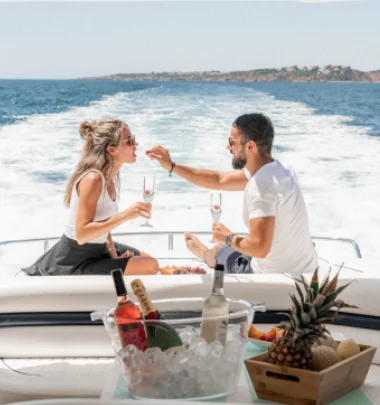
Introduction
Consider the Size and Capacity
Understand Your Usage
Consider the Material
Evaluate Storage and Transport
Assess Safety Features
Consider Maintenance and Upkeep
Consider Versatility
Assess Maneuverability and Performance
Set a Budget
Seek Recommendations and Reviews
Consider After-Sales Support
When sailing on a luxurious yacht , having the right tender is essential. A yacht tender, also known as a dinghy or a boat, serves as a means of transportation between the shore and the yacht. Therefore, enhancing the overall experience and convenience of yacht owners and their guests is vital. Nevertheless, selecting the ideal yacht tender can be overwhelming, given the extensive range of options in the market.
The initial aspect to consider when selecting a yacht tender revolves around its size and capacity. Subsequently, it is essential to ascertain the optimal seating capacity to ensure comfortable accommodation for all individuals on board. Consider the size of your yacht and the typical number of guests you have on board. A tender that is too small may be uncomfortable and impractical, while a large tender may take up excessive space on your yacht. Evaluate your requirements and strike a balance between size and capacity.
Next, you must understand how you plan to use the yacht tender. Are you primarily looking for a tender transporting guests to and from shore, or do you also intend to use it for water sports and recreational activities? If you envision using the tender for water sports, such as diving or fishing, you'll need a model to accommodate the necessary equipment. Understanding your usage will help you select a tender with the appropriate features and capabilities.
Yacht tenders are available in various materials, each with pros and cons. The most common materials used for tenders are inflatable (PVC or Hypalon) and rigid (fiberglass or aluminum). Inflatable tenders are lightweight, easy to store, and offer excellent stability. They are also more affordable compared to rigid tenders. On the other hand, rigid tenders are known for their durability and speed. In addition, they provide a smoother ride and are suitable for long-distance trips. Thoroughly assess the advantages and disadvantages of each material to make a knowledgeable and discerning selection.
Storage and transport are important practical considerations when choosing a yacht tender. If your yacht has limited storage space, opt for a tender that can be deflated or folded compactly. Inflatable tenders are typically more convenient in terms of storage and transport. However, a rigid tender may offer greater durability and additional features if your yacht has enough space. Consider the logistical aspects of storing and transporting the tender before making your final decision.
Ensuring safety remains paramount when choosing a yacht tender. Look for safety features like non-slip flooring, grab handles, and sturdy oarlocks. Additionally, check if the tender meets relevant safety regulations and requirements. If you plan to use the tender in rough sea conditions, ensure it has a stable hull design and proper buoyancy. Consider including safety equipment such as life jackets, a first aid kit, and navigation lights. Finally, prioritize the safety of your guests and crew when choosing a tender.
Maintenance and upkeep are vital aspects to consider for the long-term ownership of a yacht tender. Inflatable tenders generally require less maintenance than rigid tenders, but they may be more susceptible to punctures or damage. If you opt for a rigid tender, check for potential maintenance requirements, such as hull cleaning or engine servicing. Consider the accessibility of spare parts and service options for the chosen tender brand. Additionally, consider the financial implications and maintenance requirements necessary to upkeep your tender in optimal condition.
Versatility is another crucial factor to consider when choosing a yacht tender. First, determine whether you require a tender that can adapt to various conditions and activities. Some tenders offer additional features such as removable seating, storage compartments, or attaching accessories like a sunshade or a towing post. A versatile tender allows you to customize it based on your needs and enhances its functionality.
The maneuverability and performance of a yacht tender greatly affect the overall experience. First, consider the propulsion system that suits your preferences: outboard engine, inboard engine, or electric motor. Outboard engines are popular for their simplicity and ease of maintenance, while inboard engines provide a quieter ride. Electric motors offer environmentally friendly options with minimal noise. Additionally, evaluate the tender's stability and handling in different water conditions to ensure a comfortable and safe ride.
Establishing a budget is a crucial aspect of selecting an appropriate yacht tender. Evaluate your financial parameters and determine the amount you will allocate for a tender, considering the prospective long-term ownership expenses. Inflatable tenders generally come at a lower price point compared to rigid tenders. However, rigid tenders may offer better durability and higher performance. Factor in the initial purchase cost, ongoing maintenance, insurance, and potential upgrades. Striking a balance between your budgetary constraints and the desired features is
imperative.
Before making a final decision, seek recommendations and read reviews from other yacht owners or professionals in the industry. Their firsthand experiences and insights can guide selecting the right yacht tender. Attend boat shows or visit yacht clubs to see different tender models and discuss with experts. Take note of any recurring recommendations or concerns raised by experienced users. This research will give you a broader perspective and help you make an informed decision.
Choosing a reputable brand that offers reliable after-sales support is crucial. First, research the manufacturer's or dealer's reputation regarding customer service, warranty coverage, and availability of spare parts. A dependable after-sales support system ensures that any issues or concerns you may encounter with your tender can be addressed promptly and efficiently. Second, prioritize brands with a proven track record of excellent customer support to ensure a hassle-free ownership experience.
Selecting the right yacht tender is an important decision that contributes significantly to the enjoyment and functionality of your yacht. By considering factors such as size, usage, material, storage, safety features, maintenance, versatility, maneuverability, budget, recommendations, and after-sales support, you can make an informed choice that aligns with your specific needs and preferences.
Remember that the perfect yacht tender enhances your overall yachting experience, provides convenience, and ensures the safety and comfort of your guests. Take the time to evaluate your options, seek advice, and make a well-informed decision that suits your yacht and lifestyle. Happy cruising!

Yachts 101: Types of Yachts & Yacht Tenders
There are as many ways to get on the water as there are people who want to set sail. Pleasure vessel designs range from the simplest motor boat cruising coastal waters to the largest expedition yacht that goes anywhere in the world.
But whether you have a tiny recreational vessel or a mega yacht, every cruising yacht needs the perfect tender. Here's a look at the different types of yachts and the invaluable tenders that connect them to shore.


What Classifies As a Yacht?
The word "yacht" conjures different images for different people. Europeans, for example, will refer to nearly all sailboats and motorboats as "yachts," even very small recreational vessels.
In the US and other parts of the world, a yacht is larger and more luxurious than the average boat. They usually have a professional, full-time crew on board--but not always. Yachts might further be classified as a superyacht (over 78 feet long) or even a megayacht (over 260 feet long). Like other vessels, they may be of fiberglass, metal, or wooden construction, and they come in many different designs for various purposes.
But, no matter where you are, yachts are pleasure vessels built for recreational purposes. They'll always include some basic living accommodations like a galley (kitchen), head (bathrooms), and cabins or staterooms (bedrooms). But a yacht is appointed to a higher standard than typical pleasure boats, with nothing but the highest-quality luxury amenities. Things like air conditioning, watermakers, and lots of storage space are given on large yachts.
Beyond these bare necessities, a luxury motor yacht will also have a complement of entertainment options to suit any guest. Many are outfitted for extensive long-distance cruising, entertaining, or water sports like fishing, diving, swimming, and lounging. Of course, a yacht's accessories are entirely up to the owners.
Different Types of Yachts
There's no right or wrong answer regarding the type of yacht you want--there's something out there for everyone. Here are a few types of yachts you'll see on the water.

Sailing Yachts
Some sailing yachts are traditional, with low-slung cabins and wide, open decks, while others are hybrid yachts with modern tri-deck yacht layouts. In some parts of the world, many yacht charter boats offer sailing vacations. For example, the Turkish gulet yacht is a traditional wooden sailboat that cruises the Aegean.
Most luxury yacht owners seek the versatility and high speed that a motor yacht provides. Still, plenty of modern sailing yachts are out there for those who love to sail.
Multihull Yachts
Sailing catamaran and trimaran designs are very popular. These wide vessels are stable at sea and do not heel as much as their monohull sisterships. As a result, they're some of the most popular charter yacht designs.
Plenty of smaller catamaran motor yachts are available, but these are generally limited to boats less than 70 feet long. However, this is an exciting new sector in yachting, so expect to see more on the water soon. Thanks to their wide beams, these boats offer immense interior space. A 70-foot cat might have the interior accommodations of a 130 or 150-foot monohull.

Motor Yachts
Monohull motor yachts are the most common type on the water because they offer a surprising amount of versatility and comfort. If you can dream up an amenity or an expedition to undertake, there's a yacht out there built to do it.
Motor yachts come in a huge variety of different styles, and are outfitted and designed to meet the purposes and expectations of their owners. Some common designs include the following examples.
The Classic Yacht
These yachts have a distinctive, timeless look that reminds you of the golden era of steamers crossing the open sea. A classic yacht is designed to suit a particular owner's tastes. Most are custom-built. While they may look old, they are often modern designs with timeless aesthetics.

The Express Cruiser
An express cruiser is a single-deck yacht designed to go fast. Some are called a "Downeast" because their designs harken back to traditional Maine lobster boats. They feature an enclosed helm forward of a main deck salon and an open rear cockpit.

The Flybridge Yacht
Flybridge yachts have an upper helm--the flybridge--that is usually open-air. There's also an upper deck area where the operator and guests can enjoy fresh air and sun. Plus, the visibility from a flybridge is perfect for everyday cruising.
A flybridge sportfish yacht is designed for fishing. These sports yachts boast excellent seaworthiness and stable rides that can go anywhere. Fishing flybridges are often very tall, allowing the operator to see schooling fish from up high.
If you like the looks of a sportfish but want a luxury yacht for cruising, then a sedan bridge is for you. They have similar features to a sportfish but are appointed for entertaining and relaxing instead of fishing.
The Pilothouse Motor Yacht
Pilothouse yachts are built around an enclosed helm area. As a result, the pilothouse often gives them a classic, seaworthy look--an aesthetic that some designers embrace more than others.
The Tri-Deck Yacht
A three-level yacht is the classic yacht layout for modern super and megayachts, giving a vessel of any size the look of luxury and comfort.
The Expedition Yacht
These explorer yachts are built for extreme long-distance and all-weather cruising anywhere in the world. They're custom-built or conversions from research vessels that have been appointed to luxury standards. Their designs often incorporate pilothouse motor yacht aesthetics that look more practical than luxurious. Many of the largest yachts on the water incorporate this go-anywhere ethos.

Yacht Tenders
When you discuss the yacht tender, what you're describing is the "mothership's" primary support vessel. The size of the tender depends on the size of the mothership. For this reason, the word "tender" encompasses many different types of boats, from packable inflatable row boats to 50-plus-foot center consoles.
Many yachts carry a few "toys" that do not necessarily tender. Sailing dinghies, jet skis, or kayaks are perfect for playing in the water and enjoying your favorite watersports. But a tender, on the other hand, can carry diving or fishing gear, but it can also carry spare parts and groceries when you need supplies from shore.

Types of Yacht Tenders
Tenders are roughly divided into three categories: inflatables, rigid boats, and Rigid Inflatable Boats (RIBs).
Inflatables
These dinghies are made of air chambers and can roll into a small package when deflated. They can be packed away in a small locker. Some have removable, hard floorboards to make them sturdier when carrying a load. The largest ones are about 15 feet long and are open, driven by tiller-steered outboards.
Rigid Boats
A rigid boat is any other type of boat that isn't inflatable, be it wood, fiberglass, plastic, or metal. When it comes to tenders, the most common choice is an open-deck fiberglass boat. Many believe that the center console fishing boat makes the perfect tender since it is well-suited for many activities and available in sizes from 15 to 60 feet long.
The problem with a rigid tender is storage and weight. These vessels are often much heavier and bulkier than inflatables or RIBs. Larger center consoles are used as chase boats or are towed behind the mothership.
Rigid Inflatable Boats (RIBs)
A RIB is a rigid hull (usually made from fiberglass or aluminum) surrounded by an inflatable tube. The hull makes the boat strong and produces a comfortable ride, while the tube gives it extra buoyancy and load-carrying capabilities. They make an extremely stable platform for a tender. The tube also acts as a built-in fender, so you don't have to worry about damaging the yacht or the mothership when operating in close quarters.
RIBs are excellent multipurpose vessels that can do it all--carry the groceries, take you diving, or carry passengers to and from shore. In addition, they can operate in very shallow water and go out in various weather conditions.

Choosing the Right Tender Boat
Now that you know the types of tenders out there, you can begin choosing the right one for your yacht. No matter what type of mothership you've got, your tender should complement it. This is always a balance between the tender's size, functionality, and aesthetics.
What size tender will be easy to stow and secure onboard?
How will your tender move with the mothership? Does it stow on deck, in the garage, tow behind, or meet you at the destination?
Will it do what you need it to do? For example, how many passengers does it need to carry, or how much gear? Will it operate in heavy seas, or shallow, protected waters?
Will the tender match the mothership in terms of quality and luxury?
Will the tender complement the look and beauty of the mothership?
The Best Yacht Tenders on the Market
At Argos Nautic , we believe that getting the most out of your tender means getting the right design, performance, and customization options.
Our RIB yacht tenders are sleek, designed by artists like Patrizio Facheris of Facheris Design Inc., and handcrafted by our expert builders. In addition, we incorporate the latest building techniques and technologies, creating what we believe is the best yacht tender you can buy. Since every tender is built to order, you can customize every detail to match your yacht, from the tube and hull colors to the flooring and upholstery.
Choose the tender that meets your needs based on the size and type of internal combustion engine that you want--gasoline outboards (GT series), jet drives (JET series), or reliable diesel inboards (Diesel series).
Now that you have an idea of the types of yachts and tenders out there, the value of getting the right tender for your mothership should be clear. We believe that the two should go together, hand-in-hand. So come and design your custom yacht tender today with Argos Nautic .

Exploring the World of Luxury Lake Boats

Miami International Boat Show 2022

Sumptuous 10-Foot RIB Render

Fort Lauderdale International Boat Show November 1-5, 2017
RECENT POSTS

Unveiling Elegance: Argos Nautic Shines at the 2023 Fort Lauderdale Boat Show

Navigating Tender Storage: A Comprehensive Guide for Yacht Owners

Unleashing Summer Fun: Exploring the World of Yachting Adventures with Yacht Tenders and Yacht Toys

Choosing Your Yacht Tender Engines: Outboard vs. Jet vs. Diesel Engines

New article in Southern Boating Magazine

Step-by-Step Guide to Checking for Leaks in Inflatable Rib Tender Tubes

How to choose a tender for your Yacht

COMPACT JET TENDER ALWAYS MAKES AN ENTRANCE
SEARCH BY TAG

+1 (305) 449-9215

The global authority in superyachting
- NEWSLETTERS
- Yachts Home
- The Superyacht Directory
- Yacht Reports
- Brokerage News
- The largest yachts in the world
- The Register
- Yacht Advice
- Yacht Design
- 12m to 24m yachts
- Monaco Yacht Show
- Builder Directory
- Designer Directory
- Interior Design Directory
- Naval Architect Directory
- Yachts for sale home
- Motor yachts
- Sailing yachts
- Explorer yachts
- Classic yachts
- Sale Broker Directory
- Charter Home
- Yachts for Charter
- Charter Destinations
- Charter Broker Directory
- Destinations Home
- Mediterranean
- South Pacific
- Rest of the World
- Boat Life Home
- Owners' Experiences
- Interiors Suppliers
- Owners' Club
- Captains' Club
- BOAT Showcase
- Boat Presents
- Events Home
- World Superyacht Awards
- Superyacht Design Festival
- Design and Innovation Awards
- Young Designer of the Year Award
- Artistry and Craft Awards
- Explorer Yachts Summit
- Ocean Talks
- The Ocean Awards
- BOAT Connect
- Between the bays
- Golf Invitational
- Boat Pro Home
- Pricing Plan
- Superyacht Insight
- Product Features
- Premium Content
- Testimonials
- Global Order Book
- Tenders & Equipment
Superyacht tenders that set the trend
First impressions are vital, and for those about to meet an awaiting superyacht, a tender is the all-important first experience of what is yet to come.
A company that understands this only too well is Compass Tenders who, to date, has completed over 55 custom tender projects with an average length of 11 metres. Looking at more recent years, one trend is clear – tenders are getting bigger. The average size of open tenders built by Compass has increased by just over 20% from 8.6m in the period 2016 – 2018 to an average of 10.5m in the period from 2019 to 2021.
This increase is largely attributed to the general increase in size of the motherships, but it’s also due to the more versatile role a superyacht tender is required to play. A perfect example of this comes in the four tenders Compass are currently discussing for a 150-metre new-build. All four tenders for this brand new superyacht measure in excess of 10.5 metres and comprise two 12.5-metre tenders in sport and limousine configurations, a second 11-metre limousine and a 10.5-metre open tender with beach landing capability.
“At the moment, there is a surge in demand for sports/utility tenders as clients look for their tender to deliver a greater scope of ability and fulfil a longer list of requirements. Owners want to be able to enjoy a wider array of activities, whilst remaining in close proximity to the mothership. Tenders are becoming a satellite platform for water sports, as well as supporting on-shore excursions,” said Company Founder and CEO, Richard Faulkner.
By sharing an example of an 11.6-metre tender, Faulkner suggests what else will soon be hitting the water and setting the next trend. These unseen sketches and bespoke designs are of similar tenders under development at Compass and feature a foredeck area that can be electronically retracted to offer an additional seating area for a larger group or closed to provide space to sunbathe or maintain the flush profile. “We always strive to incorporate each client’s unique requests and we can; that’s the benefit of being a custom tender builder,” added Faulkner.
The custom creations that come from the firm’s UK-based design studio and shipyard are all built to finitely fit the onboard stowage space, achieve the desired speed and range for use, meet the needs of the owner and, often, complement the aesthetics of the mothership.
“Working with the mothership’s exterior stylist on the design of the tender ensures that the design characteristics of the parent superyacht are echoed and the result is a completely unique vessel that, quite literally, operates in perfect partnership with a united aesthetic as well as optimum performance and usability,” said Faulkner.
Compass’ in-house design team have also been working on this 11.6-metre limousine tender, which features functions and design aspects that were originally drawn in pencil. “I don’t think hand sketching will ever be completely replaced,” commented Faulkner. “To draw the tender’s lines, sometimes in front of an owner, is wonderfully creative and I think gives a feeling that design changes can be made very easily. When you put a rendering in front of a client without this exploratory creative process, it often seems more rigid,” Faulkner explained.
Having worked with almost every design studio from Sinot to Disdale, Compass are well experienced in incorporating intricate interior details to their tenders such as pattern stitching on the seating, custom material selections and stylistic lighting recessed into the hull topsides, deck and seating. “Replicating the look and feel of the mothership in the tender is something we’ve been doing for 10 years now,” said Faulkner. “One of the first projects to do this in a significant way was Madame Gu , and she undeniably set a precedent for other tenders that followed. It’s a design trend that has become integral to every project we’re asked to present for,” explained Faulkner.
Compass Tenders has many notable projects to its name, including two 10-metre custom tenders for Feadship’s 110-metre Anna , an 11.6-metre limousine tender for Lürssen’s 91-metre Lady Lara , four tenders for Lürssen’s 123-metre Project Jupiter, as well as a pair of tenders for Oceanco’s 90-metre DreAMBoat .
To get the best results, Compass encourages owners, captains and project managers to start thinking about their tender requirements at the earlier stages of the design process. For more details on how to start a tender build and Compass’ support services, contact the company directly by clicking here.
Sponsored content created for Compass.
- Frank Magazine
- Denison History
- Virtual Tours
- Alaskan Yachts
- Azimut Yachts
- Back Cove Yachts
- Beneteau Yachts
- Benetti Superyachts
- Bertram Yachts
- Boston Whaler
- Broward Yachts
- Buddy Davis Sportfish
- Burger Yachts
- Cabo Yachts
- Carver Motoryachts
- Center Console
- Chris-Craft Yachts
- Cruisers Yachts
- DeFever Trawlers
- Dufour Sailboats
- Fairline Yachts
- Feadship Yachts
- Ferretti Yachts
- Formula Yachts
- Fountaine Pajot Cats
- Grady-White
- Grand Banks Trawlers
- Hargrave Yachts
- Hatteras Yachts
- Hinckley Picnic Boats
- Horizon Yachts
- Hydra-Sports
- Intrepid Boats
- Jarrett Bay Sportfish
- Jeanneau Yachts
- Kadey-Krogen Trawlers
- Lazzara Yachts
- Luhrs Sportfish
- Marlow Yachts
- Maritimo Yachts
- Marquis Yachts
- McKinna Motoryachts
- Meridian Yachts
- Midnight Express
- Mochi Craft
- Neptunus Motoryachts
- Nordhavn Trawlers
- Nordic Tugs
- Ocean Alexander Yachts
- Offshore Yachts
- Oyster Sailing Yachts
- Pacific Mariner Yachts
- Palmer Johnson Yachts
- Pershing Yachts
- Prestige Yachts
- Princess Yachts
- Pursuit Yachts
- Riva Yachts
- Riviera Yachts
- Sabre Downeast
- San Lorenzo Yachts
- Sea Ray Boats
- SeaVee Central Consoles
- Selene Trawlers
- Scout Yachts
- Sunseeker Yachts
- Tiara Yachts
- Trinity Superyachts
- Viking Yachts
- Westport Yachts
Top Rated Tenders For Your Superyacht
Your guide to finding the best yacht tenders for sale..
Yacht tenders are an extension of your yacht; they’re smaller boats used for transportation or excursions. Nowadays, they can be inflatable, big, small, fast, slow, futuristic, or vintage. Tenders may look like a fast center console that’s ideal for fishing trips or an old Hacker-Craft that’s perfect for taking you onshore in style. You can even customize it to match your yacht. It just depends on you and your yacht’s needs. We narrowed down the best tenders for your superyacht so that you can zip around remote locations in comfort and style.
42 Pirelli 2020

The Pirelli Pzero 1250 was designed to ensure a comfortable and smooth ride. The wide bow sunbathing area offers comfort and safety for those who crave a tan, while the cockpit is equipped according to your customizations.
You can select an options package, color combination, and diesel/gasoline inboard or outboard engine packages, which is ideal for matching the boat to your superyacht. Each Pzero is custom-built for the individual and can typically be delivered in 60-90 days from the time of order.
Contact Denison yacht broker Alex Clarke to receive a quote for the exact specification Pirelli Pzero 1250 that you want.
39 Bertram Center Console 2022

The Bertram 39 Center Console is what people in sports might call a utility player — it can play several positions competently. This boat can be used for fishing trips, as a day cruiser, as a yacht tender, or all of the above. And because it’s a new boat, you can add options such as extra live wells or a summer kitchen and barbeque.
As the first model of Bertram’s new center console line, the 39 CC provides superior performance when venturing offshore. Oh, and because she’s new, she comes with a 3-year warranty. Here’s more on everything you need to know about the 39CC.
Contact Denison’s new boat sales manager Eric Macklin to schedule a showing of this yacht tender for sale.
36 Stephens Brothers 1946

This vintage 36 foot Stephens Brothers 1946 might be too cool for you. She was built as a passenger-carrying day boat and reportedly owned at various times by actors such as Wes Parker and James Dean (told ya she’s too cool). The decks are made with South American mahogany and the cockpit soles are teak. This vintage masterpiece is powered by a Cummins Diesel Engine, QSM 11 offering up 660 horsepower and a head-turning ride from your yacht.
Contact Denison yacht broker Alex Clarke to schedule a showing of this yacht tender for sale.
33 Boston Whaler 2018

Center consoles are kind of like the SUVs of the boating world — they offer a well-rounded set of features, amenities, and capabilities. And just like an SUV, they’re perfect for getting you places quickly and efficiently. This 330 Outrage is a premium outboard saltwater vessel that’s in great condition. It’s perfect for fishing trips or snorkeling excursions from your yacht.
Contact Denison yacht broker Will Noftsinger to schedule a showing of this yacht tender for sale.
30 Hacker-Craft 1929

Turn up the cool retro vibes with this 30 Hacker-Craft 1929 (*blinks eyes* yes, 1929). A little story about this gem: she was purchased new in 1929 by a Manhattan Episcopalian bishop at the New York City Boat Show. She remained on Lake George, New York until 1989 when she was purchased by a renowned wooden boat aficionado, Mark Mason of Lake Winnipesaukee.
This boat was then purchased by Alan Jackson and, at 74 years old, went through a 3-year professional restoration. She’s now one of the nicest 30-foot Hackers in the world (if we do say so ourselves) and a perfect yacht tender for those New England summers .
28 Axopar 2017

The 28 Axopar 2017 is the perfect yacht tender to accommodate a big group of people. Plenty of comfortable seating on the bow lets you face each other and cheers to the sunset while there are 6 seats at the stern for those stragglers who hopped on last.
The 300 horsepower Verado with Mercury Gold has a transferable warranty with only 225 hours. Other features include underwater lights, new upholstery, an enclosed head and sink, and a removable Bimini top. This is the only Axopar Open available in the US and it’s perfect for boaters with bridge height restrictions.
Contact Denison yacht broker Aaron Antonson to schedule a showing of this yacht tender for sale.
23 De Antonio Yachts 2013

Your superyacht may turn heads, but this yacht tender is a conversation starter. This 23 foot De Antonio Yachts 2013 offers the convenience and performance of outboard power while retaining modern European lines and concealing the 200 horsepower Evinrude G2 under the aft sun pad.
It’s fitted with underwater lights, a loud sound system, and a custom fiberglass hardtop with sunroofs. When you pull up to the sandbar or dinner in this boat, someone’s going to ask where can I get one too? Too bad it’s the only D23 available on the East Coast.
Contact Denison yacht broker Drew Offerdahl to schedule a showing of this yacht tender for sale.
18 D-Boat 2021

This small but mighty 18 foot D-Boat 2021 is a great yacht tender or day cruiser. It’s part of the new Diamond 550 series and built-in one of the most prestigious shipyards in Poland. This yacht tender offers an incredibly smooth ride and can be equipped with 115 horsepower or 200 horsepower Mercury outboard engines. Color schemes and options can be customized to match your yacht. There’s also a small cabin and a manual top for shade, plus a refrigerator to keep the drinks cold.
Contact Denison yacht broker Jake Garber to schedule a showing of this yacht tender for sale.
Luxury yacht tenders provide transport for yacht owners and crew. They’re an excellent addition to a superyacht so that you can see more of a destination and participate in fun excursions. Whether you’re looking for something futuristic, vintage, fast, or spacious, contact a Denison yacht broker to help you find your next yacht tender.
Speak With A Yachting Specialist:
Latest news.

NEWS | April 17, 2024
Elton john exclusive.
Elton John Exclusive Ferretti Group VIPs were treated to a very special event in Venice. This article was written by Billy Springer. Photography courtesy of Ferretti Group. I’m rarely at a loss for words. But, after attending a private party, in the most

NEWS | April 15, 2024
Top yacht charter trends in 2024: insights on popular destinations and must-have toys.
Top Yacht Charter Trends in 2024: Insights on Popular Destinations and Must-Have Toys Denison charter specialists share this year’s trends for yacht charter vacations. 2024 has begun with a great start in the yacht charter market. Clients are asking for more destinations, more excursions, more toys. We sat down with the Denison charter

NEWS | April 12, 2024
2024 seattle boats afloat spring show.
2024 Seattle Boats Afloat Spring Show Denison invites you to view a number of available new and brokerage boats at the 2024 Seattle Boats Afloat Spring Show. Since its inception in Seattle in 1978, the Pacific Northwest’s largest floating boat show, the Boats Afloat Show, has consistently drawn
Yacht tenders in 2022: The past, the present and the future

With thanks to Falcon Tenders , EAMS Yacht Tender Center , Hynova , Castoldi S.p.A. , MDL Marinas , Compass Tenders Ltd , Maritime Yacht Services and Vita Yachts
The world of superyacht tenders and toys is big business. Every luxury yacht requires a suitable tender and an array of modern toys to enhance the experience of those on board.
It’s well known that the industry revolves around consumers and their insatiable desire for bigger and better, and the tender market is no different. New technologies and equipment are continuously being developed in a bid to satisfy demand and meet the inevitable changes in trends and requirements over time. A host of factors can combine to influence the direction of travel - what’s hot, what’s not and new regulations implemented for safety or environmental purposes - and keeping abreast of these developments is essential for professionals operating in this sphere.
It begs the question: what’s the general outlook within the tender market right now? What’s the current situation in regards to order books, supply chains and innovative technologies?
.png)
We’ve discussed these key issues with a series of industry experts to gauge their perspective on the state of the market today and how things are likely to develop in the future.
The state of the tender market: then and now
Tenders have long been a pivotal cog in the successful running of a modern superyacht. They are integral in the day-to-day operation of the vessel and have many uses in support of the leisure activities of the owner(s) and their guests. Traditionally, if it could meet this criterion, that was all that mattered.
From the starting point of a 14-16-foot launch hanging from the davits of a mid-century gentleman’s motor yacht, as motherships have evolved and grown so too have the tenders that accompany them. RIBs were the first real major development, and now as many yachts have become large to the point at which shorter journeys are highly labour-intensive on an operational level, it’s not uncommon to see vessels of 38-55 feet taking care of day trips. This creates a completely different class of support vessel beyond tender or chase boat.
For Mark Pascoe, managing director of Falcon Tenders and a renowned professional within the industry, the ‘get bigger’ trend has been a consistent one throughout his 25-year career. In his role at Falcon, he’s observed that many designers are now penning yachts that are more accommodating of larger tenders, underlining the lasting impression of this particular trend on the market. The growth in the adoption of support vessels has further enhanced capabilities to accommodate larger tenders.
If it’s being factored into yachts that are merely embryonic concepts, one can assume that the trend is unlikely to deviate too much in the coming years.
What do modern tenders offer?
Most modern tenders offer the luxury and premium experience the discerning clientele of the superyacht industry expects. The largest tenders come equipped with a cabin, shower, wet bar and refrigeration to ensure longer trips provide every necessary amenity.
Pascoe revealed that, typically, most enquiries to Falcon are for tenders of 10 to 15 metres in length, but that he’s also fielded interest in tenders of up to 20 metres, indicating an appetite for vessels that break with convention. It’s unsurprising, therefore, that limousine tenders and chase tenders have seen their popularity increase.
Many modern owners are not native boaters; they’re UHNWI that demand flawless experiences – particularly when aboard their luxury superyachts. If they require a ride in their tender for any period of time, they don’t want to endure uncomfortable bumpiness or exposure to the elements like they would in a small jet tender. The ride must be smooth, quiet and efficient. To provide this, tenders can be fitted with gyroscopic stabilising systems that reduce tilting movements and modern drivetrains.
The experience must be as pleasant as the owners enjoy on the mothership, so a lot of time is taken by manufacturers to ensure each tender delivers exactly what a client desires.
.png)
Practicalities
Beyond the obvious luxury style requirements, there are a number of practical considerations behind the move to larger tenders too.
The biggest yachts are already anchoring a considerable distance offshore, meaning alternative modes of transport are necessary to make it to the mainland. Many superyachts can accommodate a helicopter to ferry passengers to and from, but sometimes inclement weather can prevent it from being used. In these circumstances, or if it would prove to be quicker, a suitable on-water alternative is required. With these factors in mind, the yacht’s tender must be able to transport individuals to dry land with minimal fuss and maximum speed, hence the attractiveness of limousine and chase tenders. With these factors in mind, the yacht’s tender must be able to transport individuals to dry land with minimal fuss and optimal comfort, hence the attractiveness of limousine and chase tenders.
Of course, larger tenders require suitable on-board storage. As mentioned earlier, designers are increasingly factoring this into their concepts, but it remains something that owners (and more specifically their captains) need to be mindful of. On 500GT yachts where space is particularly tight, decision-makers may look to tick two boxes at once by purchasing a luxury tender that is also SOLAS-certified (thus negating the need for a second vessel that has this accreditation).
A number of brands offer SOLAS models that fulfill the stringent safety criteria set out by Lloyd’s Register, without compromising on the vessel’s performance. It’s a cost-effective solution comparatively to new commissions, which may see it become increasingly appealing to some owners and captains.
Where are most of the enquiries coming from?
There is a misconception that many areas of the industry will grind to a halt due to the war in Ukraine, but as we explored recently, that doesn’t seem likely. Only around 10% of superyachts are owned by Russian UHNWIs, meaning the remaining 90% of the fleet are free to go about their business as usual. The industry is alive and kicking – as Falcon Tenders can attest.
Mark Pascoe revealed to us that a significant proportion of the enquiries Falcon Tenders have recently received have come from the USA market, with a healthy amount of European interest on top.
For businesses like Falcon that are based in the UK, the interest from the States has driven a need for larger tenders to be transported overseas. This adds to the lead time but it clearly isn’t proving to be an issue for buyers.
Supply chain issues
One issue that is plaguing the tender market at the moment is the supply chain. It has been a problem for many months and there’s no sign of the situation improving significantly any time soon.
It’s not a problem reserved solely for RIBs and outboards; inboards, composites and electrical components have also been adversely affected. According to Rene Nayertz, managing director of EAMS Yacht Tender Center in the South of France, the availability of both outboard and inboard engines is close to zero worldwide, while many essential parts are subject to ever-extending delivery times. The COVID-19 pandemic, among other factors, has caused substantial damage to global supply chains, with logistics, production and shipping all impacted over the past 18 months. The result? Severe delays, price hikes and dissatisfaction among manufacturers and consumers alike.
For now, the situation hasn’t deteriorated to an unworkable or intolerable level, but there are a number of moving parts and things can change quickly. To this end, the supply chain is in an unpredictable and perilous state.
.png)
We’ve been told by one source that the cost of raw materials has increased, in some cases, by up to 50% in the last six months alone. A continuation at this rate would pose a number of long-term challenges for the industry to navigate, especially if the boom the wider superyacht sector is experiencing continues into 2023 and beyond. It would add further strain to an already delicate and sluggish supply chain, which in turn would cause pandemonium in terms of lead times. Clearly this isn’t compatible with the desires of demanding owners.
At this stage, however, with no crystal ball to hand, nobody can propose with any certainty how the situation is likely to unfold. From our conversations with senior professionals there’s a consensus that the situation can be managed, but it doesn’t stop individuals from being wary.
The sense of trepidation surrounding much of the industry isn’t shared by all brands, though. Those that manufacture their own materials, or source them locally, are a lot less reliant on the traditional supply chain and are thus operating with very minor disruption.
Italian brand Castoldi Tenders , for example, is in a unique position. It manufactures its own jet drives, which has somewhat mitigated the global supply chain issues faced by its competitors. In addition, Castoldi actively uses Italian suppliers where possible to negate the ‘global’ element of his brand’s supply chain. He concedes that it isn’t always possible, but it helps to “reduce the pinch felt by many”. Comparatively, Castoldi Tenders is in a powerful and enviable market position.
Given the perils of the wider supply chain and the financial impact this has the potential to cause brands, we could see more follow the lead of Castoldi Tenders in the future. If logistically possible, it’s an obvious solution given how restricting the wider supply chain can be in moments of turmoil.
Interestingly, the current worldwide situation brings another pertinent consideration into focus, re-enforcing the need for the industry to fully explore alternative propulsion options and move away from traditional practices.
With the tender market generally in a healthy position despite the extended lead times for new builds, there remains a couple of pertinent questions on the lips of everyone connected to the industry: how can tenders become greener? And what alternatives should consumers consider?
While environmental regulations imposed upon superyachts are currently minimal, an increasing number of owners are becoming conscious of what they can do to reduce their impact. Others are opening their eyes to alternatives simply as a result of supply chain issues; they’re keen to find products that can be delivered with far shorter lead times. Some tenders, such as the hydrogen-powered Hynova models, can be manufactured and launched within eight months. This is one-third of the time that some custom tenders are currently taking to be built.
These reasons, combined with an industry desire to pre-empt inevitable future environmental restrictions, have led to continued investigations into what is and isn’t possible with current technologies.
.png)
Tim Mayer, sales and marketing director of MDL Marinas (who runs the Green Tech Boat Show), noted, “We've been truly delighted to watch the scales tip from the minority of boat owners aiming to be environmentally responsible to the majority. Over the last two years, we have had more contact from boat owners wanting to find out more information about green technologies.
“We have aimed to demonstrate this to customers in practical ways, helping them enhance their sailing experiences. This is why we're putting together an event that presents the information showcased next to other green technologies. This will allow consumers to understand what the total offering could be, and how they can help the environment by investing in green technology today.”
As Mayer reflected with optimism, there are a number of possibilities. In a similar theme to the uncertainty surrounding the supply chain, though, nobody truly knows how sustainability will materialise in tenders of the future. There’s an undeniable aspiration to discover green solutions, which is a great starting point, but in reality, the likelihood of delivering something scalable is fraught with difficulty. This causes scepticism among some experts as to the viability of the alternatives currently being explored. There’s an undeniable aspiration to discover green solutions, which is a great starting point, but in reality, the current situation is perceived as limited (albeit that charging networks and other such solutions are in fact growing). This causes scepticism among some experts as to the viability of the alternatives currently being explored. However, those active within the green alternatives are at pains to point out that change is happening.
While electric tenders may seem like the logical answer, there are certain limitations which may prevent this being the solution for all user profiles.
Chase boats, the larger tenders currently preferred by some owners, are designed for heavy use and high-speed cruising to and from the mothership, and would require batteries that offer a full day’s use on a single charge. Anything less would be impractical given the distances that a chase boat is often expected to cover.
However, the capabilities of some batteries do not meet this criterion; some only offer an hour’s high-speed run time before they need to be recharged. This is nowhere near enough. The reality for most yachts is that the tender is ‘standing by on standby’ and carrying out short ship-to-shore runs – and, for this profile of use, electric propulsion becomes far more viable and practical.
A second concern with batteries that cannot be underestimated is the risk of fire. A number of serious incidents have been reported within the yachting world over recent years that are suspected to have been caused by lithium-ion batteries. The blaze aboard M/Y Kanga in 2018, for example, was thought to have been started by lithium battery packs that were being stored in the garage for the yacht’s electric surfboards. There were no reported injuries, but everybody on board was forced to evacuate the vessel, which sustained significant damage.
The batteries referred to in this example are on an entirely different scale to those used by leading electric tender manufacturers, who incorporate battery management systems (BMS), and cooling and control software. This allows the status of each battery cell to be monitored and managed throughout discharge, storage and charging cycles. The automotive industry has evolved to develop certification standards for batteries, and the marine industry has been able to use these new technologies.
These examples prompt justifiable concerns for owners and yacht crews regarding the storage of lithium batteries on board. The petroleum revolution of the 20th century led us to become comfortable with mitigating the risks associated with storage and transport of large volumes of flammable hydrocarbons. Albeit with greater technology at our fingertips, we are at an earlier stage of the electric revolution and industry regulations are forced to be reactive to these changes.
.png)
A flammable item has the potential to wreak havoc (and ultimately prove fatal), so for electric tenders to be a genuine option on superyachts there needs to be concise health and safety regulations from lawmakers over how best to stow them. Some sources were at pains to tell us that Lloyd’s regulations are currently being developed, which presents uncertainty in the journey towards a successful rollout of electric tenders across the industry. That said, there are multiple examples of new-build projects preparing their garages for electric tenders under the guidance of Lloyd’s.
The third and final point to consider regarding all-electric tenders is infrastructure. Charging points are not in place in some more remote locations around the world – this is something that would have to change to make electric tenders logistically feasible for those wishing to go off the beaten track. What use is a tender that can’t be charged in the peaceful, idyllic locations that superyachts often cruise?
Some may say that diesel generators on board the mothership offer a highly portable charging solution, and it’s true that generators of the 21st century are run in tandem with power banks tuned to optimal operating conditions in order to achieve full efficiency. With this in mind, charging the batteries of an electric tender could form part of generator protocols.
Some manufacturers of electric tenders that are conceived from their genesis to be an electric solution may prove viable for most usage profiles, however buyers need to be mindful to be dealing with the right supplier.
While they have not yet been adopted by the industry, these nascent technologies have a longer track record in automotive propulsion and huge steps have been taken to make their mainstream use a reality.
For applications where greater speeds and distances are required of a chase tender/day tender, electric propulsion may still prove to have its limitations. Simply put, unless a significantly upgraded battery is created in the future, electric may not fulfil all requirements to diminish the reliance on fossil fuels at the largest end of the tender market. Some brands are “ready” for green technology - Castoldi Tenders’ jet drives, for example, can be powered by electric motors - but the technology is not currently where it needs to be for the company to fully commit to retrofitting this to its existing models.
In the eyes of some, hydrogen power looks to be a more plausible green option for the tender sphere to adopt. It has its drawbacks, but there are a number of advantages that make it a genuine possibility if things pan out as hoped.
Hydrogen-powered boats use hydrogen as a source of energy to drive an electric motor. The on-board hydrogen fuel system pulls it from storage cylinders into fuel cells, where the hydrogen is converted into energy. This energy nourishes the battery pack, which consequently powers the motor.
Hydrogen offers zero emissions, zero noise and zero vibrations – everything an owner would want from their tender. These are three huge plus points. However, a combination of technical issues, cost and a lack of refuelling stations are hurdles that would need to be overcome for it to take off on a global scale.
In 2021, UK-based Fuel Cell Systems worked on a French project for a mobile refuelling station capable of supplying up to 40 kilograms of pure hydrogen – which is equivalent to about 250 litres of diesel. It was initially positioned in Marseille to support the launch of an innovative 12-metre (40-foot) hydrogen tender from Hynova in June 2021, before following the boat up the coast as part of Hynova’s Sea Show.
Chloé Zaied, founder of Hynova, told us that she’s confident hydrogen power is the “best solution”. In fact, she goes as far as to say it has the ability to transcend the yachting industry and lead to energetical independence for the whole world.
“For dayboats [or large tenders], if you want to be able to rival the performance offered by classic propulsion methods - that doesn’t require refuelling or recharging - then hydrogen is the best solution. Hydrogen allows you to reach a cruising speed of 18 knots (with a maximum 20 to 25 knots), all while making zero noise, zero vibration and zero smell.
.png)
“In my opinion, hydrogen isn’t just a solution that will be exclusive to the marine sector; it represents the doorway to energetical independence – it will be the third industrial revolution.
“It’s very difficult to know how long this transition will take, I would not be able to say, however giving people an example to follow will help speed that up.” Her hope is that through Hynova, the world can see a template for what’s possible and how it can be achieved.
As Zaied touched on, though, the transition would depend on hydrogen being available in ports and marinas - whether that’s through fixed stations or mobile stations - otherwise it’s a non-starter. Availability is the catalyst to driving demand and making it scalable.
Should this be accomplished, the cost of installing stations will reduce by up to half in around three to four years, according to Hynova modelling. Currently the cost of a fixed station is €2 to €3 million (c. $2.1 to $3.1 million), with mobile stations costing around €100,000 (c. $106,000) – a 50% reduction would propel hydrogen from a trend to an indisputably viable option.
This model revolves around hydrogen being produced at a central electrolysis plant capable of turning out a decent amount of gas, before special trucks housing a number of long cylinders then deliver it to stations under huge pressure.
The production of hydrogen via electrolysis is sustainable, but unfortunately not all hydrogen is produced in this way. Currently, most of the world’s hydrogen is produced using fossil fuels, which defeats the point for those who are pursuing hydrogen power as a green alternative.
This leads us on to another issue the industry needs to be mindful of: greenwashing.
Greenwashing in yachting
What is greenwashing? It’s considered an unsubstantiated or misleading claim to deceive well-meaning consumers into believing that a company’s/individual’s products are environmentally friendly when in reality they aren’t. It’s a very real problem, and hydrogen is vulnerable to this practice.
For example, while hydrogen enables a tender/vessel to be zero-emission, the nature of the production chain means it retains a carbon footprint. For consumers purchasing a hydrogen-powered tender under the impression they are being green, the reality is they continue to be indirectly responsible for a host of emissions.
.png)
Not all stakeholders in the exploration of hydrogen power - or indeed any other eco alternative - are looking to deliberately deceive consumers; there are a number of businesses working hard to counteract it. Nonetheless, without total transparency from manufacturers and appropriate research from consumers, it’s a problem that threatens to undermine the progress being made to source more environmentally friendly propulsion solutions.
Fortunately, there are alternatives to the fossil-fuel production of hydrogen. The aforementioned electrolysis is one such option: it can use wind and solar energy to create hydrogen on board. As well as enabling the superyacht to be self-sufficient, the secondary benefit of electrolysis is that producing its own hydrogen means a vessel requires a much smaller space to house the hydrogen storage cylinders, which is a big advantage. Without electrolysis, hydrogen must be stored at controlled temperatures in heavy tanks, which take up a significant amount of space.
Another option is converting hydrogen to ammonia purely for storage. It takes up much less volume than hydrogen, and does not require cryogenic storage. The ammonia can then be converted back to hydrogen on board. The downside to this method is that ammonia is toxic to humans and sea life, so special care and attention would be necessary to avoid accidents.
Changing the mindset of the masses
Ultimately for hydrogen power, electric power and/or any other options to become a reality, a degree of bravery is required from owners. A number of the experts we spoke to, including Pascoe and Zaied, suggested it was important for owners to be innovative and deviate from the typical ‘buy-off-the-shelf’ model to accelerate the development of new technologies.
There are a number of businesses, including Falcon Tenders whose Miss Wonderly features twin hybrid drives, that are ready to think outside the box and turn concepts into reality, but progress will be limited unless owners have the courage to steer away from normal buying habits and invest in the ‘future’. The automotive industry again looks to be a good point of reference having moved swiftly to hybrid, electric and now hydrogen, with large-scale trials currently underway in France.
Only the continued growth of environmental consciousness among owners and those working on board will facilitate this shift. While buying off the shelf typically allows owners to receive their product in a quicker time, satisfying one of their key cravings, it does mean they haven’t bought something particularly unique. One of the key USPs of an innovative hydrogen tender, on the other hand, is that they’re rare, meaning anyone who does own one will be seen as something of an influencer. There’s a certain prestige to being an early adopter, especially if said trend takes off, and the professional hope is that this will become apparent to owners as more research gets published.
Rory Trahir, CEO of Vita Yachts, commented, “The industry is pretty conservative and so our pitch to swap out a tried and tested (if polluting) solution was difficult to fathom for some. I am pleased to say that a lot has changed even in the past two years and we are now seeing clients actively pushing for electric tenders with the builders, brokers and managers all embracing the change.
“Electric propulsion systems and boats are a reality today, so there is no reason for boats with the right operational profile not to go electric. Superyacht tenders doing ship-to-shore operations with a power supply at the mothership with a mixed usage/speed profile is an ideal application.”
.png)
French anchoring environmental regulations – how does this affect things?
There are other environmental factors to consider away from alternative propulsion. In 2021, the French government implemented anchoring regulations to help protect Posidonia (seagrass) growing in the Mediterranean Sea amid coastline and 25m (82ft) depths. One of the oldest living beings on earth and of paramount importance to underwater ecosystems as a source of oxygen, the change in French law prevents yachts and superyachts from anchoring in areas where Posidonia is present.
With superyachts therefore required to drop anchor considerably further from shore around the South of France than before, and with regulations being updated annually after feedback from captains, it’s a situation to watch closely in the coming months. As understanding and adherence to the regulations grows, it’s likely to intensify the desire for larger, high-performing tenders that can take those on board safely to their appointments on shore.
Of the brands and businesses we spoke with, very few have noticed a tangible impact of anchoring regulations on the buying habits of consumers as yet. But as awareness grows this might change.
‘Should I refit my tender?’
Aside from green propulsion, another way that superyachts can at least reduce their impact on the environment is by refitting their existing tenders, rather than buying new. Refits may not offer the same ‘wow’ factor as new builds, but they can offer similar luxury, are a lot cheaper, and can be completed in a fraction of the time. It’s unsurprising, therefore, that tender refit specialists are noticing an uptick in clients.
Refits can range from minor modifications and enhancements to a total renovation of its structure and engineering. It provides consumers with a raft of upgrade options without the hefty price tag or wait time. In the past refits have only appealed to a percentage of owners, but with the multitude of drawbacks and environmental pressures influencing purchasing decisions right now, it might be that refits become more tempting.
Sophie Tapp, founder of Maritime Yacht Services in the UK, told Yachting Pages that her company has been fully booked for the past two years from October to April. With refit teams deployed across the world, the business has had to double its workforce to meet demand. Albeit anecdotal, this provides an indication as to how credible this option is becoming.
.png)
What happens next?
It’s fair to say the tender market is currently in uncharted, choppy waters. While tenders themselves are as popular as ever, with bigger and better all the rage, the industry is currently in a state of flux amid disruptive supply chain issues and a burgeoning effort to discover environmentally friendly alternatives. Nobody really knows when and how progress will be made on either front, creating a sense of uncertainty about the future.
What is certain is that significant change is coming. As the public becomes increasingly conscious and vocal about the environment and the importance of moving away from fossil fuels, pressure will mount on the entire superyacht sector to not only play its part in implementing positive change, but given the large amounts of money in circulation, lead the way. Factor in the frustrations of long lead times on traditional tenders, and the move to alternative propulsion could accelerate if owners’ patience wears thin.
For electric, hydrogen power or any other alternative to be explored to its true potential, investment is required to develop technologies further and improve the chances of industry-wide adoption. As it stands, no one solution ticks all of the boxes (this applies equally to conventional and new technologies), but that’s not to say they never will do.
We could be on the brink of the third industrial revolution, according to those in the know. It’s going to be fascinating to watch how it all unfolds.
Dive into our library of Tenders, Jet Skis & Toys articles for more expert insight, which includes our Tried & Tested: Best Yacht Toys , showcasing the best toys on the market right now! Alternatively you can search for a supplier near you .
Tried & Tested

In the realm of maritime luxury, the quest to offer yacht charter guests the perfect night's sleep has become an art form, one which luxury bed and linen supplier, CC Design, has fully committed to.
A jacket completes any crew member's uniform so it's an important garment to get right. In this Tried & Tested, Sea Design pits eight popular jackets against one another to determine which one is best for superyacht crew in 2023.
iAQUA creates high-performance, technologically advanced underwater scooters. In this Tried & Tested, a team of experienced testers have rated and reviewed the AquaDart Pro and AquaDart Nano series to reveal the stand-out iAQUA sea scooter.
Sarah Boghurst of Southern Right Yachting shares the reasons why she believes former yachties make such good yacht manag...

Ancasta has unveiled its line-up for spring boat shows across the UK and Europe....

Popular Articles
Finished reading now find your perfect supplier..
Search our industry-leading directory for over 20,000 superyacht suppliers, providers and marinas.
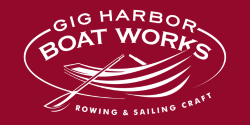
Call Us: (253) 851-2126 Mon-Fri 9-5 Pacific Time
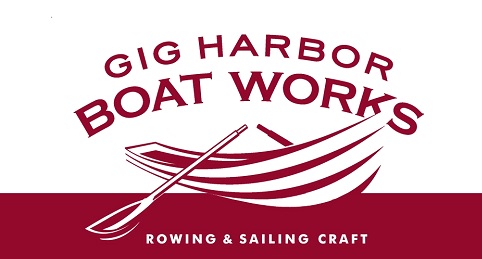
Yacht Tenders
Row. Sail. Motor. Our traditional-style dinghies are made for more than just ship-to-shore.

Classic Beauty with Modern Versatility
Gig Harbor Boat Works is the builder of a unique line of premium small boats for rowing and sailing. Our yacht tender dinghies are modern fiberglass versions of traditional working boats, used by people who earned their living using only wind and oar.
Back in the days of working sail, a good ship-to-shore dinghy could make or break the tradesmen who ferried cargo and passengers from tall ships into port. A dinghy had to be tough, stable, and forgiving in a variety of weather conditions.
We’ve updated these classic designs in lightweight yet durable fiberglass composites. The result is a convenient, low-maintenance tender that is easy and fun for modern boaters to use. While you can use our dinghies with an outboard motor for quick ship-to-shore runs, the fantastic rowing and sailing performance also makes for a boat you’ll enjoy in its own right.

Our Best Yacht Tenders
Every dinghy in our model line has both rowing and sailing capabilities. All can be paired with a 2hp outboard motor. However, there are subtle differences that give each one a unique purpose, suiting a different type of boater. Read the short descriptions below and see which one sounds most like you. We love talking with you about how you envision using your boat, so contact us if you’d like help selecting the best boat for you!
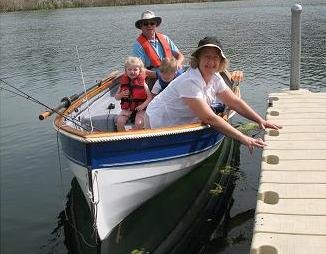
12' Point Defiance
An incredibly versatile dinghy equally well-suited to rowing or sailing, beamy enough for comfort while fishing or crabbing. No sliding seat, but can be rowed solo or tandem on fixed seats. With a 4-person capacity, it’s popular for families with kids or as a tender for larger yachts.
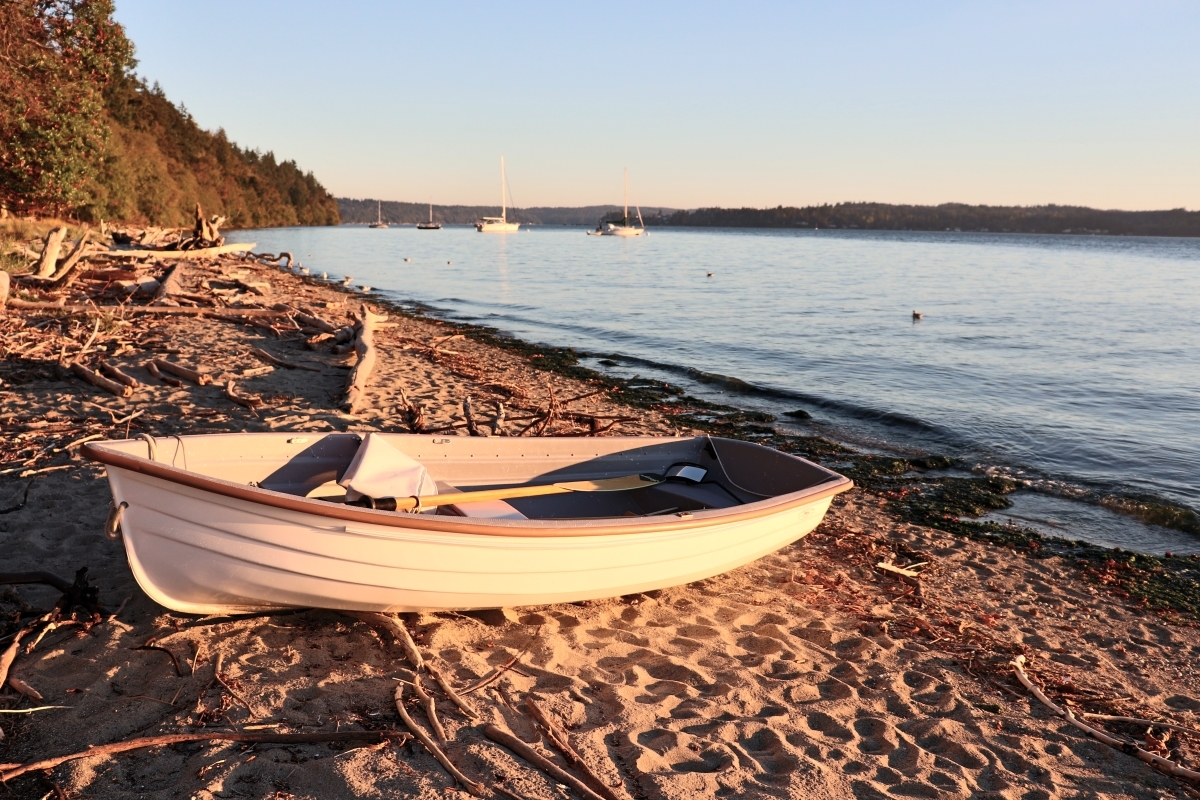
10' Navigator
Designed for optimal sailing and rowing performance, and can be used as a yacht tender for up to 3 people at a time. A convenient size for suspending from davits or sidemounting on your yacht’s transom, and excellent for towing. Weighs only 90 lbs in standard fiberglass, or 75 in our lightweight kevlar foam-core composite!
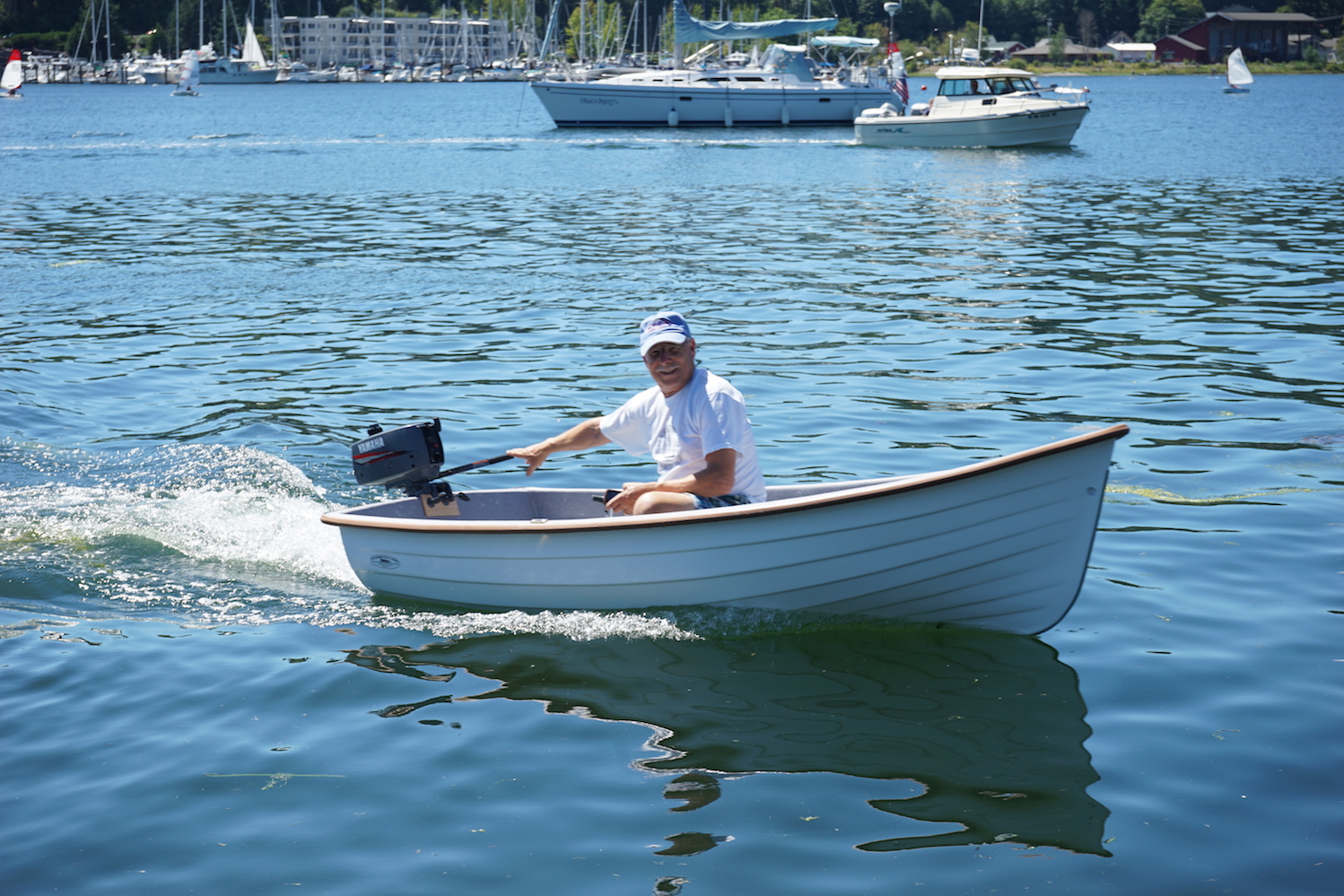
9.5' Captain's Gig
Our most stable small dinghy, particularly when paired with inflatable sponsons . Ideal for motor or trawler yachters who still want to get out rowing or sailing. The broad transom makes the boat feel less “tippy” than other traditional dinghies, and also makes it great for outboard motoring.
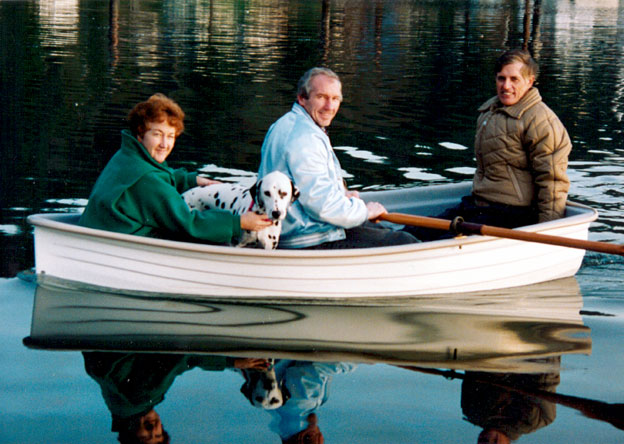
8' Nisqually
The best-performing 8′ rowboat you’ll find anywhere, hands down. Can transport up to 3 people and weighs only 75 lbs in standard fiberglass, or 65 lbs in our lightweight kevlar foam-core composite. If you’re short on space and are limited to an 8′ tender, this is the one you’ve been looking for.

14' Whitehall
The classic ship-to-shore vessel originally designed to transport cargo and passengers on New York Harbor in the 1800s. Tracks exceptionally well for efficient rowing that makes the most of each pull on the oars. Our version includes a built-in sliding seat, ideal for rowing for pleasure or exercise.
Our tenders are made for more than just good looks… they’re built for folks who really want to get out there and enjoy everything that life on the water has to offer. For instance, our rugged designs, durable fiberglass construction, and low maintenance finishes are ideal for yacht owners who don’t want to fuss over their tender… yet want it to be ready for action when you are.
Our standard dinghies come with a durable vinyl trim — but wood trim upgrades are available for those who prefer some showstopping brightwork to complement your mother ship.
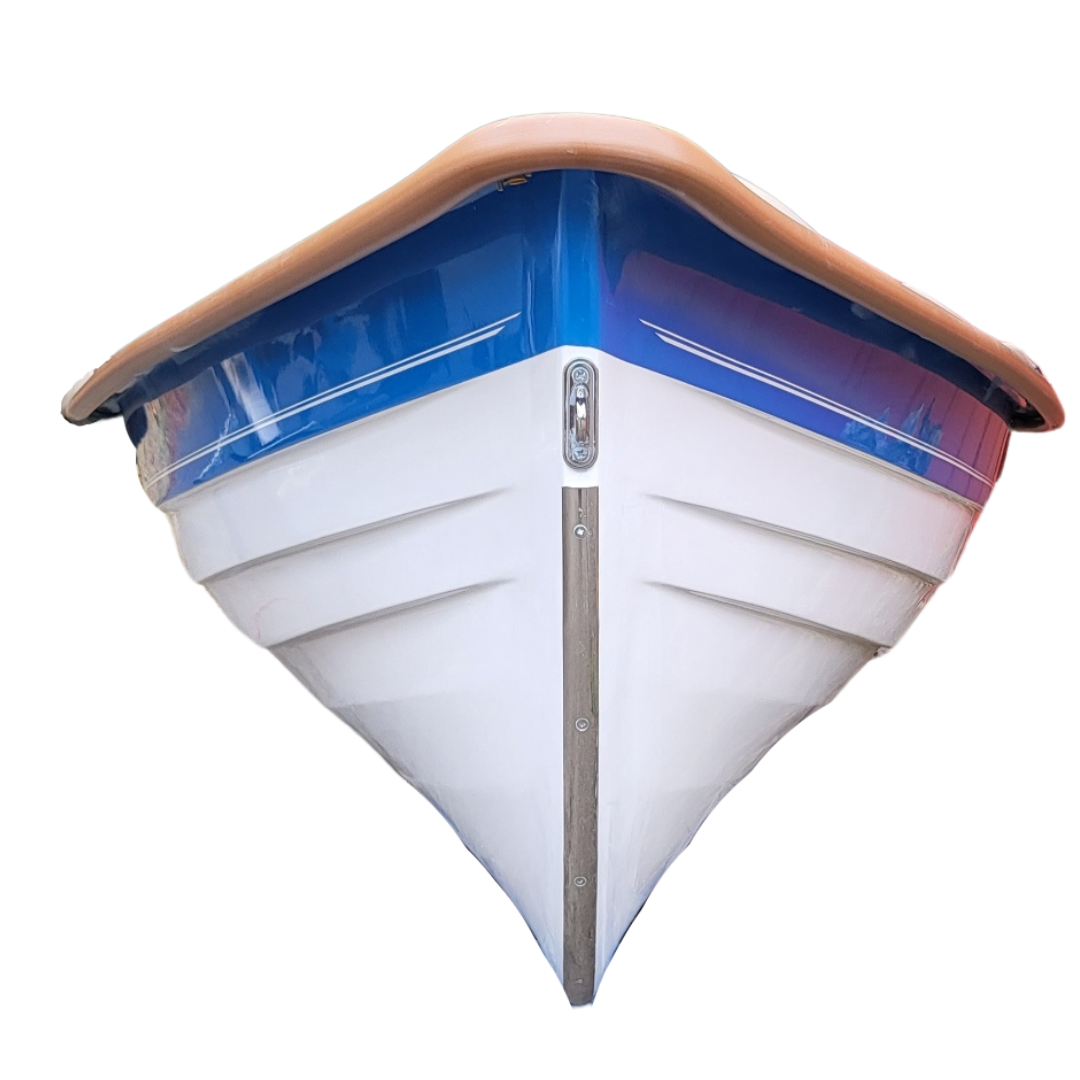
Ship to Shore . . . and More
Tender Features:
Rowing, sailing and motoring capabilities (rated for 2hp outboard), made from lightweight, durable, and repairable fiberglass, built-in flotation that meets or exceeds uscg standards, configure your tender dinghy to hang from davits, sidemount on a swimstep, store on deck, tuck into a tender garage, or tow behind, tailor your boat to your mother ship with custom colors and finishes, custom options.
We custom build each boat to order, so you can take home exactly the tender you want. Decide what model suits you best, then customize it to fit your unique needs. (We’re here to help when you need us.)
A few popular options:
Gelcoat Color
Our standard rowboat comes in classic white — but we can add gelcoat color to personalize your boat or coordinate it with your mother ship. See color options >>
Get the timeless look of a traditional wood boat by upgrading your boat’s vinyl rubrail to a laminated wood sheer. (Shown here on our 10′ Navigator.) See examples of our custom woodwork >>
Built-In Mounting Hardware
Protect the longevity of your tender by adding reinforcement for side/swimstep mounting, or 4-point lifting eyes for suspension from davits. We also offer consultations on unique mounting challenges you may have, and have even built two-piece “nesting” dinghies for those with limited deck space for tender storage!

Made in the USA: Gig Harbor, WA

Our Heritage
Gig Harbor Boat Works is a local homegrown company founded in 1986. We are small craft specialists, using our experience as boaters and craftsmen to create boats that combine traditional design with modern materials and conveniences.
Almost 40 years later, our boats are still proudly built here in Gig Harbor, WA and we are recognized for excellence in the small craft community worldwide.
Our History >>
Curbside Shipping Nationwide
Proudly made in Gig Harbor, WA, carefully packaged, and shipped to your door — from sea to shining sea.

"A true multipurpose dinghy"
“The Nisqually is a scaled-down version of a utility boat commonly rented out for recreational purposes during the 1890s. The optional Kevlar-reinforced version… is exceptionally light and strong; the heavier, solid-fiberglass version is still quite light thanks to its single-skin lapstrake construction. The low-maintenance Nisqually, a capable rower, sailer, and powerboat, is a true multipurpose dinghy.”
– Cruising World

Speedy Solo Rowing
“I maintained a GPS-measured 4 knots at a relaxed pace, 4.7 knots at an aerobic-exercise effort, and hit 5 knots in a short sprint.”
– Small Boats Magazine, Apr 2023

Impressive Handling
“I was impressed that the boat’s 125 lbs was so easy to handle. Two adults should be able to lift and walk with the boat if that’s required. . . . a boat that can be launched from and reloaded on a trailer singlehandedly.”
– Small Boats Magazine, April 2023
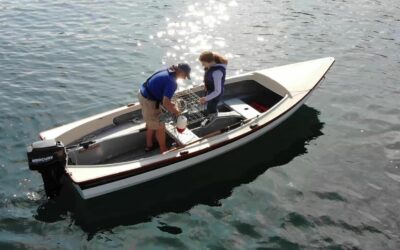
Lobster Boat Redesign — Update #2
Lobster Boat
See our design renderings of the all new Lobster Boat!
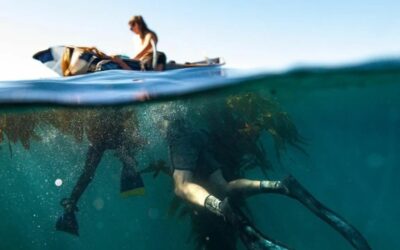
Mailbag: Family Diving from a 14′ Whitehall
Mailbag , Whitehall
The family that dives together, thrives together.

New Year, New Digs!
blog , Boat Shows
Gig Harbor Boat Works Expands Operations Into New Facility
A Beautiful Yacht Deserves A Beautiful Dinghy
We're always happy to chat with you about what you're envisioning. No haggling, no high-pressure sales pitch.
Email us through the form below, or call 253-851-2126.
- Name * First Last
- Your questions or comments: *
Yes, sign me up!
Yachting World
- Digital Edition

Best sailing tender: get a buzz from your boat or boot
- Toby Hodges
- July 13, 2022
Want some easy, fun sailing this summer? launched from your yacht or car, the latest sailing tender ideas give that instant sailing buzz. Toby Hodges and Sam Fortescue report

While we all crave as much helming pleasure as possible from our cruising yachts, the reality is that after making realistic space, volume and budget compromises, they may not always be that exhilarating on the helm. But once you reach a destination or anchorage, what’s to stop you, your friends or kids getting your hands-on tiller-sailing fix if you can stow the right sailing tender aboard?
You could argue that the development of lightweight, modular or inflatable dinghies in recent years has solved a headache for some yacht owners – now they can go for extra volume, or switch to a multihull perhaps, safe in the knowledge they can get the spray-in-the-face dinghy experience from a tender or toy once anchored.
Stowage space, whether on deck, on davits or in a locker, governs what options are available. In the past the choice has fallen into three categories: a rowing dinghy you can sail, a nesting dinghy, or a sailing inflatable (such as the Tinker Tramp). And while these categories haven’t necessarily changed, the design and technology lately has made the products immeasurably more appealing!
The ability to stow a quick-to-rig toy in the boot or on the roof of the car, has also unlocked the potential to explore a multitude of different sailing waters easily. These designs have brought to sailing what inflatable paddleboards have brought to watersports.
Best sailing tender

For cruising sailors, this could be an ideal solution: a stable, lightweight tender that will sail well too
OC Sailing Tender
This has been at the top of my wishlist for tenders for some time, but now the family-run New Zealand company has come out with a rig for this lightweight composite boat that has just doubled the appeal.
OC Tenders was developed by experienced cruising sailors who were after a dry, stable, maintenance-free tender which is light enough to pull up a beach. A wide hull shape with plumb bow and flat run provides stability and volume and early planing ability, while foam sandwich construction makes it solid (puncture free) and light enough to carry. These also happen to be key elements for many modern performance sailing dinghy designs.
OC Tenders is unveiling a new Sailing Tender version this year, a kit which transforms two of its existing tenders into sailing dinghies. The main difference is a centreboard case which attaches to the thwart with a mast step below, neither of which can be removed, but only add 6kg weight. The rest of the sailing components are stored in bags which fit inside the tender, including a 6m mast in two sections, boom (both in 30% carbon), centreboard, rudder, hiking straps and 7.5m2 sail.
OC has a video of the tender surfing along and another of how easy it is to right it if you capsize. The boats weighs 68kg for the 3.3m or 74kg for the 3.5m, while the sailing components add just 15kg. Both are also available in carbon versions (a NZ$4,000 upgrade). The slight catch may be the cost, and that it’s a small company with low production run and high demand.
Price: OC330 from NZ$23,500 (circa £12,000).
Buy it now from octenders

Reverso Air is quick to get on the plane. Photo: Armand Dayde
Reverso Air
It may be a nesting dinghy, but there’s nothing clinker-built about the Reverso Air. From the outset, the team behind this pocket beast of a boat were focused on performance, and that is what you get in spades. It has been clocked at 16 knots and readily takes to the plane, surfing down anything from harbour chop to long swell.
Reverso is built in Brittany using advanced composite construction. The 3.40m hull is infused in honeycomb sandwich, for stiffness and light weight, and carbon reinforcing is added where the loads are greatest, such as the mast step. The mast itself is a tube of high-modulus carbon fibre weighing just under 3kg, and the sail is 7m2 of high-tech membrane from Incidence.
Part of the stellar performance comes from the hull shape, designed by Charles Bertrand. A broad beam, flat bottom and deep chines provide stability for sailing with kids and a great platform for planing when a gust blows. “It is the lightness of the boat which makes it fast and efficient, allowing it to accelerate quickly,” says founder Antoine Simon. “Also, the quality of the materials, which give a dynamic response and transmit the forces, especially with the rigid hull.”
The boat is designed to take two grown-ups or an adult and two kids, so you can refine your technique in company if you like. Simon says this makes the boat ideal for teaching kids or going out for a solo burn.
Assembly is pretty simple and can take less than two minutes. The hull is composed of four parts, the heaviest of which weighs 16.8kg. The sections clip together along the coaming using stainless-steel levers. Then you add tension along the bottom of the boat using two Dyneema lines with a 1:14 cascade that puts on 600kg of compression.
When disassembled, the parts nest inside each other, fitting readily into the boot of a family car or an SUV. Measuring 1.45m x 0.92m x 0.72m, the folded boat is also designed for easy fixing to a trailer or towing-ball platform behind a car.
Accessories that improve the storage and use of the boat include a bag, (€490); smaller padded bags for the four mast sections, centreboard, tiller and rudder; a mounting mat to protect the boat on rough surfaces (€170); and a folding beach trolley (€490). And there’s a GPS speedometer (€499), specially designed for mounting at the base of the mast.
Price: Reverso Air €8,913 plus €1,090 shipping.
Buy it now from Sailreverso

You don’t have to be a pro to get the AST Foiler skimming the waves. Photo: Sören Hese
Foiling is no longer limited to pros and daredevils. AST’s beautifully designed foiling dinghy makes it possible for almost anyone to experience the exhilaration of flying on water. With a top speed of 25 knots-plus and a really simple control system, it is easy to get airborne.
The key is the mechanical foiling system, which requires no trimming. A foil on each side of the 3.85m hull resembles nothing more than a giant spider’s leg, or a wonky ‘7’. The foils are loose-mounted in such a way that they can cant slightly according to the tack you’re on. When the boat goes about, the leeward foil rises and the new windward foil drops. It requires no electronics or hydraulics – just a bit of elementary physics.
You control the boat using a T-shaped rudder whose foil supports the boat aft and helps keep you balanced while foiling. With foils deployed, the effective beam jumps from 1.58m to 2.10m and the draught from 15cm to 1.10m, giving the boat excellent stability.
AST says the hull will fly from 8 knots of true wind, thanks in part to the lightweight layup, with an overall weight of 55kg. The foils, rudder and mast are all in carbon fibre, while the hull is in a lightweight foam-epoxy sandwich.
With a cool reverse bow, open transom and hiking wings, this boat looks the business. It can support up to 95kg of crew weight, so could in theory take two children. But this is really a solo sailer, designed for thrills and spills. AST offers two different sails, 7.5m2 or 9.5m2.
The foils can be folded flush to the hull for transport., there’s a custom-made aluminium trolley for launching and towing; padded covers for the foils and rudder (€269); and a Velocitek SpeedPuck to measure your speed (€399).
This is not a cheap option… but it is a fun one.
AST also does a non-foiling L12 Lowrider – a 3.82m planing performance dinghy, which weighs just 30kg.
Prices: AST Folier €15,631 inc VAT, L12 Lowrider €8,824 ex VAT.
Buy it now from Ast-yachts

IZIBoat is easy to transport and can be assembled in 15 minutes
IZIBoat germinated from a desire to make sailing easy, fun and accessible to all, by creating a catamaran that is ultra fast to assemble (less than 15 minutes). No tools are needed thanks to a neat plug, lock and tension system. While speeds of 14+ knots are reportedly achievable, it is more aimed at accessible sailing, regardless of age or ability. So it can seat four and is intuitive for new sailors thanks to joystick steering – just tilt the stick the way you want to turn.
The brainchild of François Tissier, who dreamed of a dinghy with ease and stability while living in the South Pacific, it took many years of R&D and 11 prototypes. The beach cat measures 500x62cm, so can easily be stored in a garage and its five components weigh 152kg, so it can be transported on the roof of a car or even towed by a bike or e-bike.
Price: from €8,990.
Buy it now from Iziboat

LiteboatXP 16 can be rowed or sailed – fast
LiteboatXP 16
This is a fun sailing boat that you can row properly for recreation too. The first Liteboat XP was a 20ft model which we tested four years ago and were so impressed with the sailing ability, we jointly gave it a European Yacht of the Year award. It’s also excellent for rowing enthusiasts. For those still sceptical, consider that it’s drawn by in-demand IMOCA designer Sam Manuard.
The new 5m/16ft model is more compact and lighter still (100kg). There’s no cuddy, but it still sports a sliding rowing seat, carbon oars and outriggers and a catboat-style rig with two part carbon mast and a 7.5m2 boom-less sail. But it’s when reaching with the 6m2 gennaker that you’ll really get the buzz. It converts from sailing to rowing mode in under a minute. It’s an efficient explorer that’s blast to sail, will keep you fit and avoids the need for a smelly, noisy outboard.
Price: from €14,500.
Buy it now from Liteboat
Best inflatable sailing tender

The black and yellow Tiwal rocket is designed in Brittany. Photo: Christiane le Port
The original Tiwal 3 is already marking its 10th anniversary, the design having been at the forefront of using drop stitch technology to create a really stiff inflatable. Now the boat has been turbo-charged, tweaked and improved. The result is the Tiwal 3R, with a top speed of 14 knots and a helming position just millimetres off the water.
It comes deflated in two bags weighing around 30kg each (plus a smaller sail bag), and comprises a concave inflatable hull and anodised aluminium ‘exoskeleton’, which transmits the forces from the mast, rudder and daggerboard. It also provides two raised hiking ‘wings’ which allow you to balance the 6m2 or 7m2 sail, tailor-made by North Sails in Xi V2 racing laminate.
The 3R’s performance boost stems from a number of small steps. For instance, the hiking bars have been extended aft so that you can shift weight back when the wind picks up. The aluminium frame is stronger and stiffer for better power transfer, and the hull is a more efficient shape, courtesy of the rail on the stern. The mast and boom are now 90% carbon for lighter weight.
Assembly takes 25 minutes – a little longer than the original Tiwals, because of the additional elements of the frame and control lines, according to founder Emmanuel Bertrand. Experience says there is a bit of fiddly slotting of aluminium tubes together, which can be trickier if sand gets into the joint. The boat is rated for crew up to 200kg, which allows for two adults or one grown-up and two children. Really, though, you want to be sailing this alone at top speed. And with a choice of two sails, you can go out in pretty much any conditions.
Price: from £8,140.
Buy it now from Tiwal
Dutch brand DinghyGo has built a reputation for the reliability of its growing range of sailing inflatables.
They are not performance oriented, but are easy to assemble, have bags of buoyancy and can be stored in two mid-sized bags. The range starts at 2.30m LOA, but the flagship Orca 375 is the latest release, with a 4.8m2 mainsail and a 1.1m2 jib.
The four-piece mast requires three soft stays to keep it aloft, while the foot is anchored through a thwart. With 650kg of payload capacity, you can bring three adults and a heap of camping gear with you.
Price: £4,000.
Buy it now from Dinghygo
Minicat Guppy
The Czech sailor behind the MiniCat brand teamed up with round-the-world sailor Laura Dekker to launch the Guppy.
At 3.00m LOA, it is the smallest boat in the Minicat range, with a capacity for two, but weighs a staggeringly small 26kg itself.
Perched on two big 33cm floats, just a small aluminium frame does the job of supporting the mast and the trampoline. The mast and its 3.9m2 sail is stayed to a short bowsprit, and the whole takes just 15 minutes to put together. Stub keel fins help reduce leeway.
Its light weight makes it eminently portable and easy to stow.
Price: €2,665 ex-VAT.
Buy it now from Minicatamaran
Inflatable Wingfoil
Granted, it can look a bit daft watching middle-aged folk pumping and flapping away while trying to get a giant inflatable wing to lift their mass onto a skinny foil. But once you’ve experienced that feeling of pure flight, silently skimming over the surface, there’s no going back.
Whether for surfing, windsurfing, or even kiting, any solid boards take up valuable locker space. All of which arguably makes an inflatable foil board and an inflatable wing the ultimate in compact sailing fun.
The foils typically disconnect from their masts and pack in protective bags. The inflatable boards can also be used to wingsurf or paddle on in displacement mode. Or try towing one behind a tender – with a foil you only need very small speeds (around 6 knots) and, with practice, you can be surfing a wee wake.
The smaller volume boards better suit surf and wingfoil use and the larger boards are for wing and SUP enthusiasts.
F-One’s Rocket Air is designed around its rigid boards, and range from 75lt (4ft 11in) to 185lt (7ft 11in) and prices from £625-£825.
Buy it now from f-one.world
Naish, meanwhile, has models of its new Hover board from 80-170lt, which have composite carbon plates on the bottom for the foil join for a stiff ride.
Buy it now from Naishfoils
If you enjoyed this….
Yachting World is the world’s leading magazine for bluewater cruisers and offshore sailors. Every month we have inspirational adventures and practical features to help you realise your sailing dreams. Build your knowledge with a subscription delivered to your door. See our latest offers and save at least 30% off the cover price.

- Build My Tender
- Customisation Studio
- Owners Centre
- Find a dealer
- Yacht Fitment
- News & Press
- Photo Library
- Video Library
- Sustainability
Tender Category: SportJet
Sportjet 520.
We’ve designed the SportJet 520 to fit on 30m+ yachts. Utilising the ultra reliable 230hp Rotax ACE 1603 engine the Sportjet 520 can achieve a blistering top speed of 52mph, you wont be able to wihttps://www.williamsjettenders.com/tenders/sportjet/sportjet-520/pe the smile from your face. The SportJet 520, our largest model in the SportJet lineup, offers a spacious sunbathing… Continue reading SportJet 520
SportJet 460
We’ve designed the SportJet 460 to fit on 25m+ yachts, carrying upto 6 passenger in ultimate comfort and style. With its purpose-built hull designed to sit firmly in the water, the SportJet 460 offers an exceptionally comfortable cruising experience, ensuring stability and straight-line navigation along the coast. However, don’t be deceived by its relaxed cruising… Continue reading SportJet 460
SportJet 435
We’ve designed the SportJet 435 to fit on 20m+ yachts, available with either the standard 90hp engine or an optional 130hp BRP Rotax designed to satisfy thrill-seeking waterskiers who require the extra torque and speed the larger engine delivers. Thanks to the high-performance sports hull, you can carry up to 7 people in comfort. Experience… Continue reading SportJet 435
SportJet 395
We’ve designed the SportJet 395 , a midsized Yacht Tender to fit on 20m+ yachts, perfect for ferrying up to 5 passengers from the jetty to your yacht or exploring those hard-to-reach calas, bays, and beaches. With its exhilarating low seating configuration, this incredible inflatable tender ensures that all six passengers are in for the… Continue reading SportJet 395
SportJet 345
We’ve designed the SportJet 345 to fit on 16m+ yachts, so owners of mid sized yachts can now experience the ultimate sports tender.Its BRP Rotax engine and expertly designed sports hull gives you and 4 passengers power and precision in one small but mighty package.
- VENDEE GLOBE 2024
- French | fr
- German | de
- Italian | it
- Spanish | es
- United-States | us
- English | en
- Zodiac Nautic
- Boat tenders
Tenders & Yacht Dinghies
In addition to your main yacht, sailboat or catamaran,, cadet roll up.
Inflatable dinghy with wooden slatted floor
Its floor, in a wooden slat design, can be rolled and stored in seconds.
Inflatable dinghy with inflatable floor
Very simple and above all really compact! Completely flexible, including the floor, it can be folded and stored in less than 2 minutes in a suitable bag!
CADET RIB ALU
RIB dinghy with aluminium hull
A truly solid-hull dinghy (aluminium), which provides the best in stability and safety on board!
Inflatable dinghy with aluminium floor
An aluminium floor, which can be put in place in no time for maximum stability.
NOMAD RIB ALU
New tenders with a double floor, waterproof storage, and top-quality tubes!
CADET RIB ALU DL
Its biggest asset is its locker: Your backpack or today’s picnic will fit in just fine…
The smallest Open
Ideal for a first boat with room for 4 people on board, it is easy to manoeuvre and tow. Ideal for small budgets.
The ideal electric dinghy
Whether used as a dinghy or a funky little boat, this 3.4 is more environmentally friendly than ever and requires no maintenance.
Ideal dinghy or small robust boat
The 3.4 is sure to please: Easy to steer, 3 large storage lockers! A true little racing kart that will delight you and your guests.
YACHTLINE 360
The smallest Yachtline
An ideal size to accommodate 4 people on board, with a maximum power of 40 HP, it can carry its passengers at high speed.
YACHTLINE 400
Well equipped
The Yachtline 400 can carry 5 passengers with its 3 seats and 50 HP.
The smallest Pro
A traditional model, it has always been part of the Zodiac range.
Unbeatable value for money
Ideal model for fishing and cruising with family or friends with its 4 large seats that can accommodate 6 people on board and its large lockers.
YACHTLINE 440
The right compromise
The ideal complement to transport 6 people, with its numerous storage lockers and its 60 HP.
The biggest of the compact Open
A generous power output of up to 80 CV is a big asset, and it is ergonomic and spacious for comfortable and active days out.
YACHTLINE 490
The biggest
At 4.90m and 90 HP, it can be used as a main boat for up to 9 people. It can also tow water-skiers or wakeboarders.
OUR NAVIGATION PROGRAMS
Are you looking for a tender or dinghy model for your yacht, sailboat or catamaran? The choice of boat will depend on your intended use, frequency of trips, sailing areas and your expectations. Choose a comfortable, innovative and powerful boat that you can accessorise according to your taste and needs. You will already have basic equipment: lifting and towing rings, bench, paddles or oars, many handles … for the comfort of the pilot and the passengers. The design of your dinghy will perfectly match your yacht thanks to its elegant aesthetics. Your RIB dinghy guarantees you excellent performance, great sailing comfort and spaciousness for regular use. Its sturdiness ensures greater safety at sea where the weather is particularly unpredictable.
Versatility
Yacht dinghies serve you both as lifeboats or support boats to get the pilot, crew and guests to land or shore, but also as leisure crafts due to their versatility. The size and engine of the tender mean it can be used as a pleasure boat for sea trips with friends or family; from 4 metres upwards for the larger models. So go and explore some beautiful places. The finish and quality of the accessories ensure the longevity of your boat.
Power and agility
In our range, you will find 100% electric tenders like the eOpen, but also ones with hydrojet propulsion, such as the eJet. This modern technology, which uses a turbine to draw in water and propel it quickly to move the boat forward, offers a more fun and agile way to steer. Compared to an outboard boat with a propeller engine, waterjet propulsion offers greater safety, the ability to sail in shallow water and faster acceleration.
Tender models with rigid hulls such as the CADET RIB ALU, the small OPEN, the eOPEN, or the Yachtline provide you with more stability at sea, even in difficult weather conditions. This gives you more space on board for passengers and storage.
ALL CAPABILITIES
- Boats for 4 people and above
- Boats for 6 people and above
- Boats for 10 people and above
- Boats for 14 people and above
- Boats for 20 people and above
- Tenders from 2 to 3 meters
- Boats from 4 to 6 meters
- Boats from 6 to 8 meters
- Boats from 8 meters boats and above

- Center Consoles
- Dual Consoles
- Motoryachts
- Sport Cruisers
- Tenders & Ribs
- U.S. Atlantic
- Engine Buyers Guide
- Electronics
Top 15 Tenders and RIBS
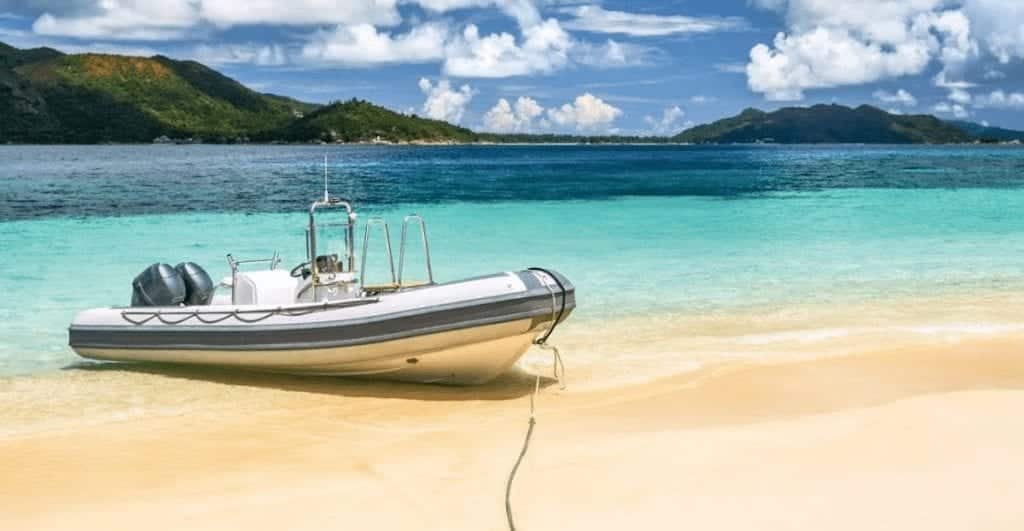
Top 15 Tenders and RIBs
Here’s a look at some of today’s top tender and rib builders and their models., zodiac pro 6.5.
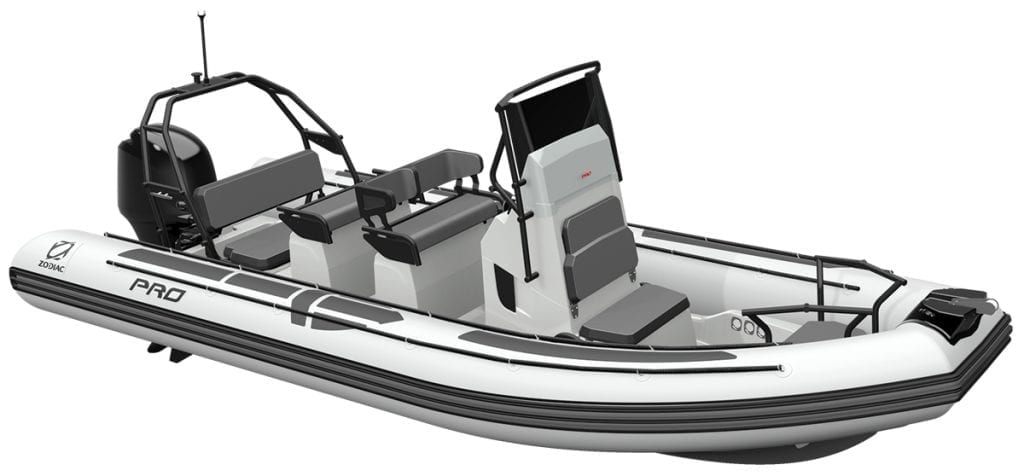
Achilles HB-315DX
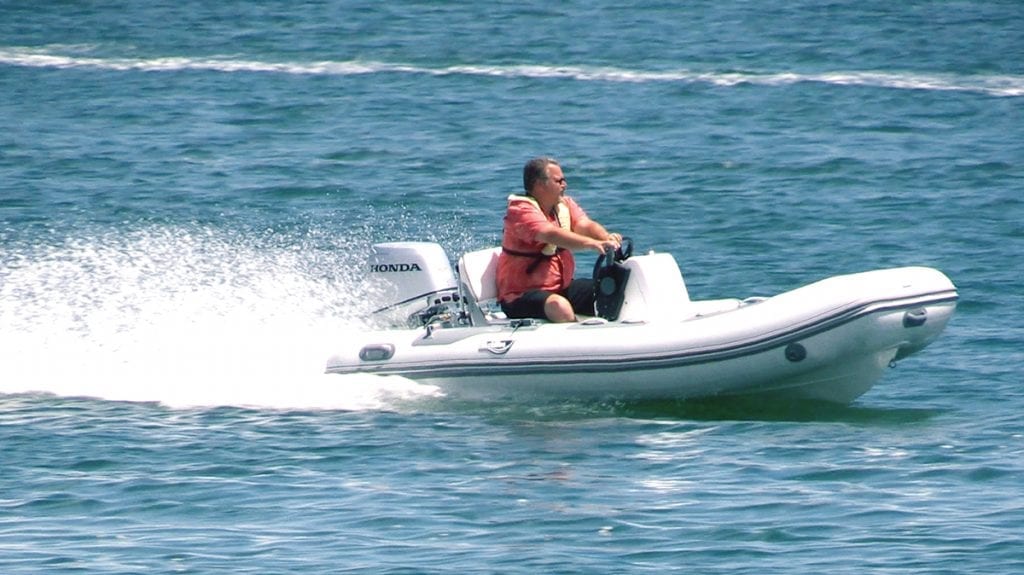
Airship 340
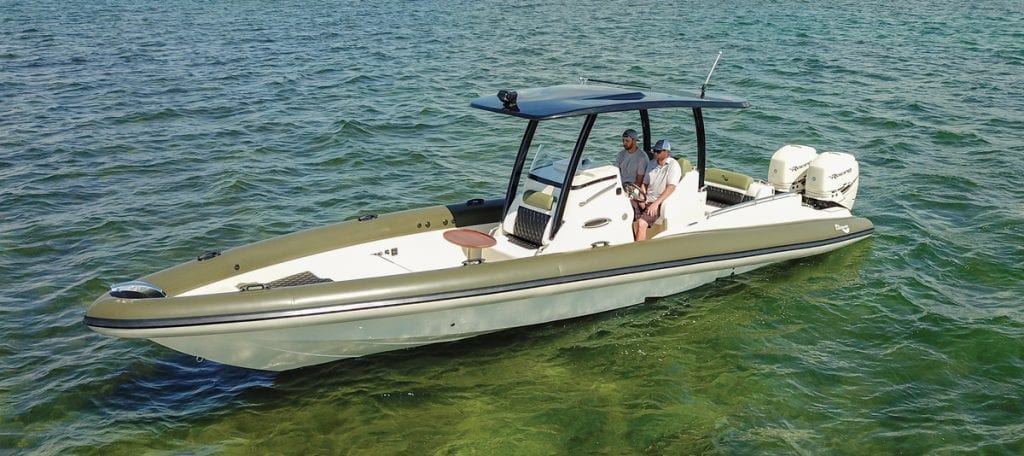
Hyfoil Foiling RIB 28
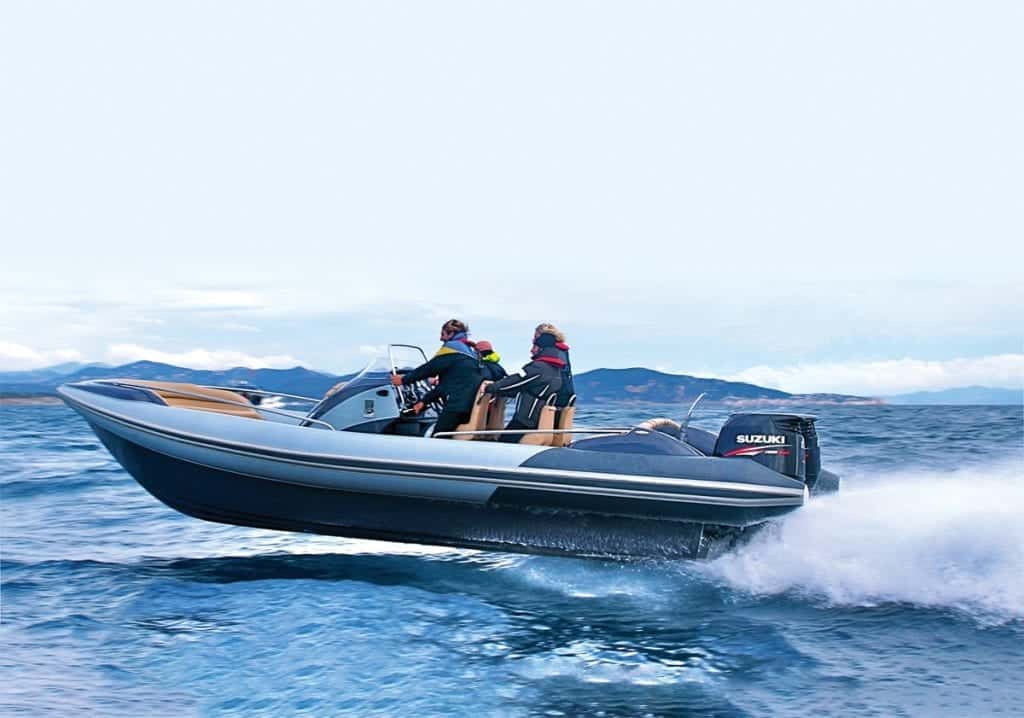
Argos Nautic 305 Yachting
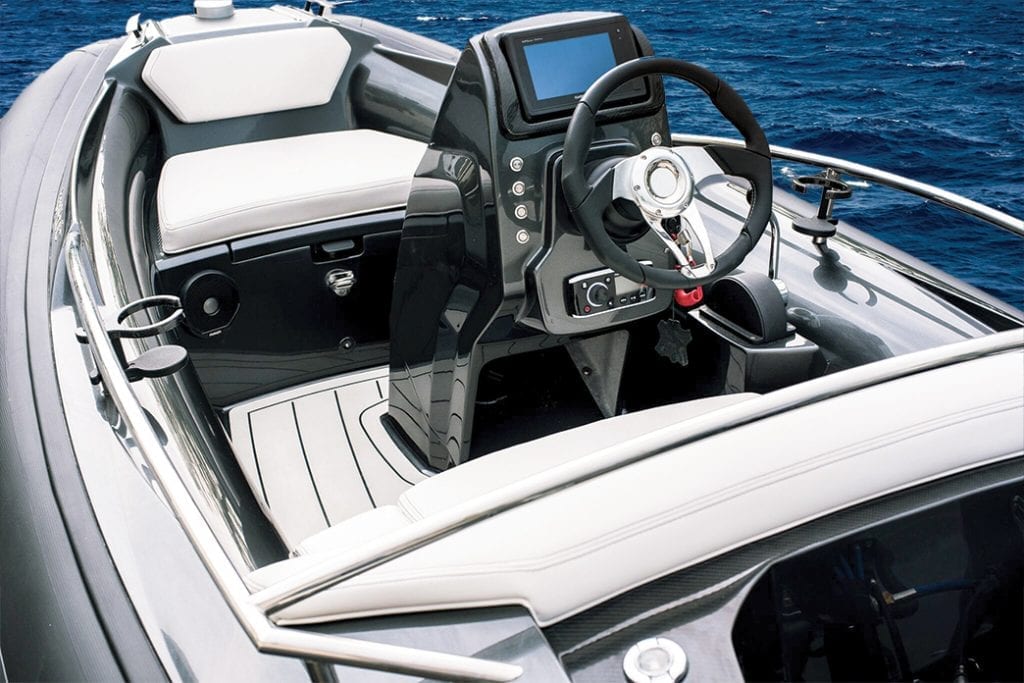
Avon Seasport 400 Deluxe
Caribe nautica dl11, highfield cldl360.
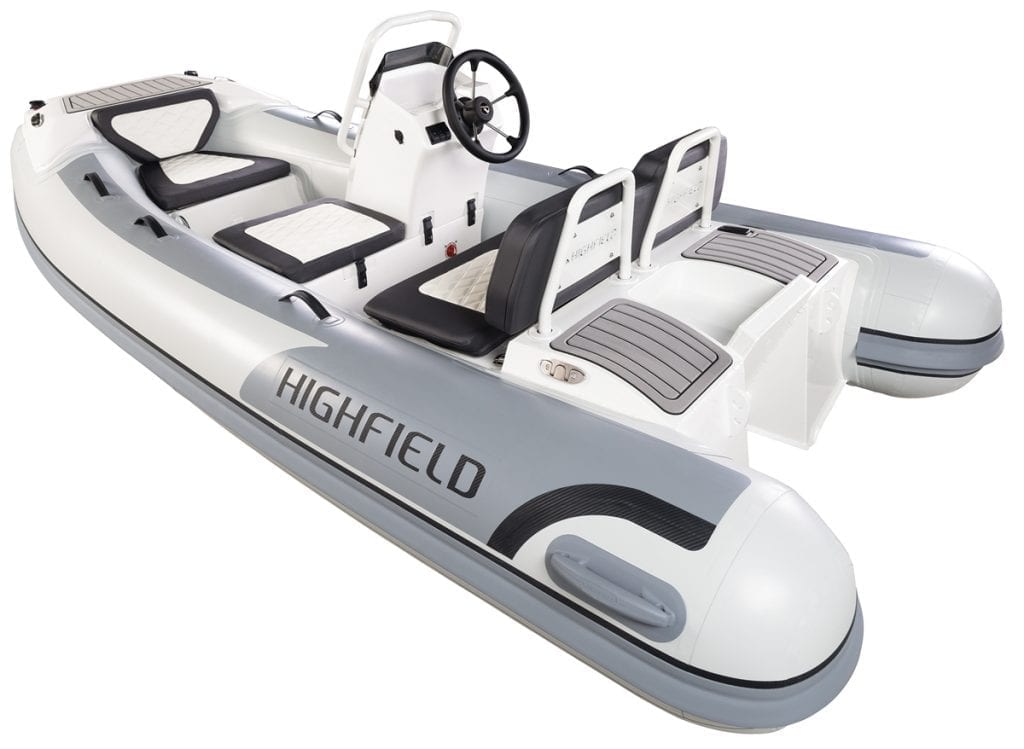
Mercury 320 Aluminium
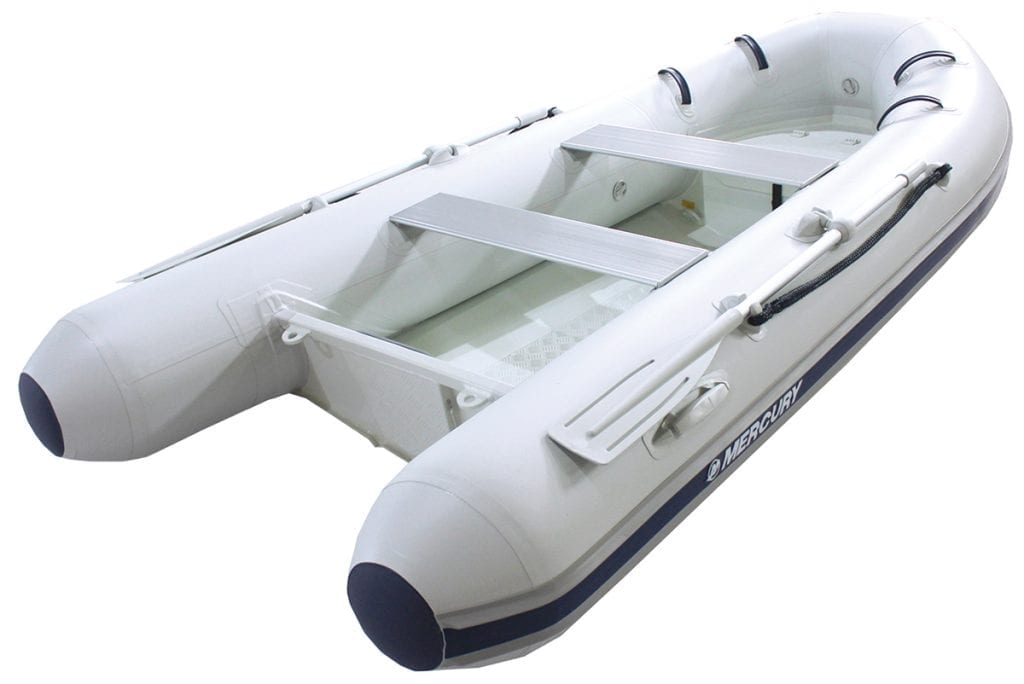
Technohull Omega 45
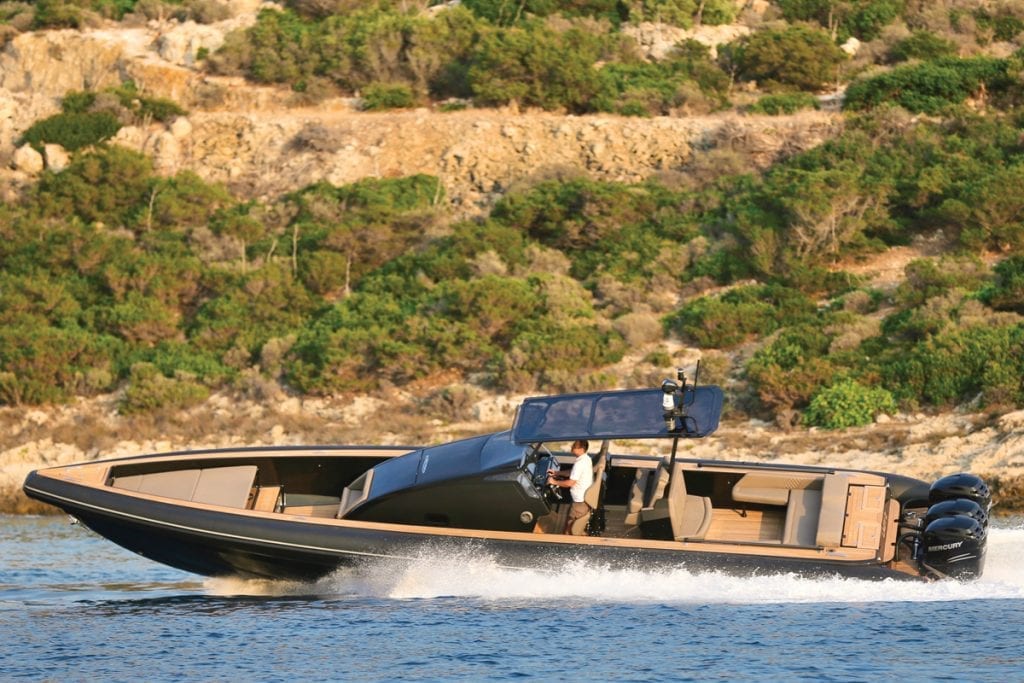
Ribcraft 5.85
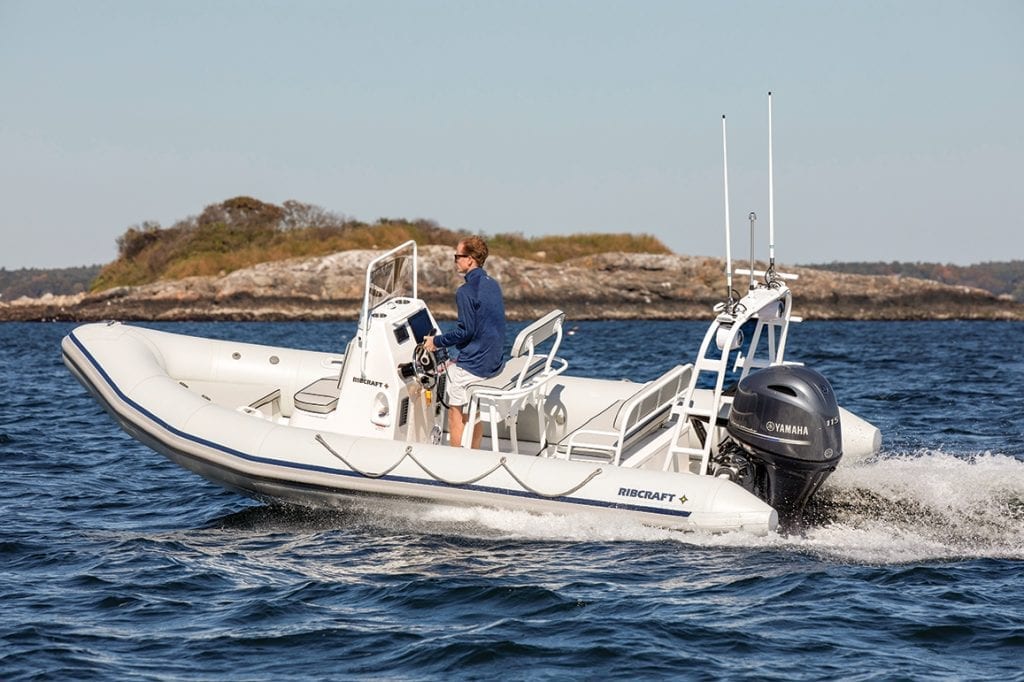
Sealegs Electric E4
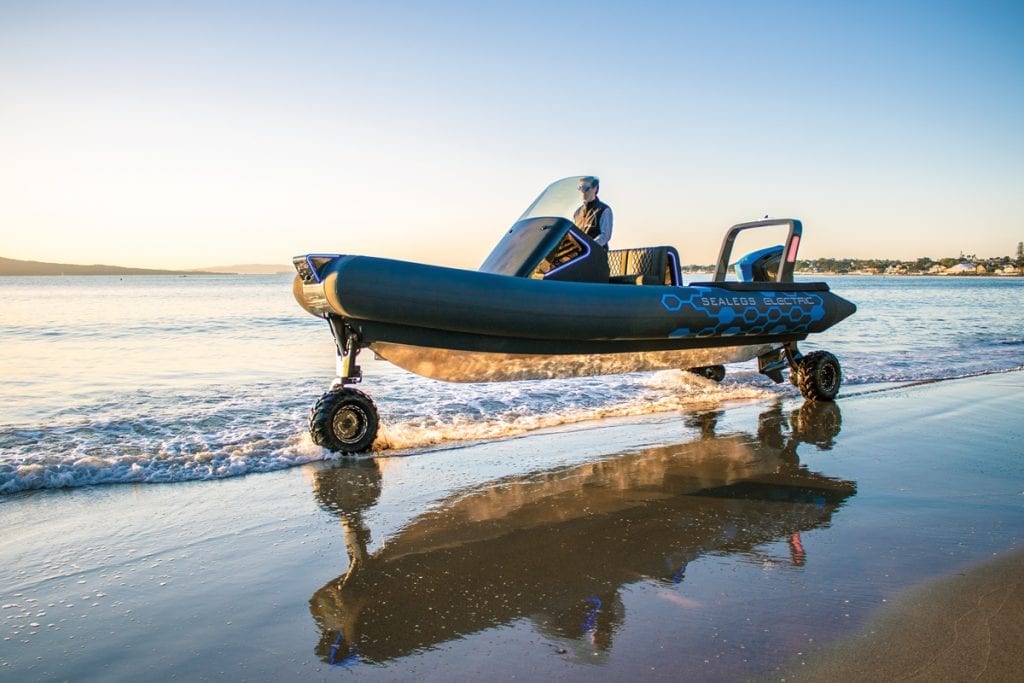
Walker Bay Venture 14
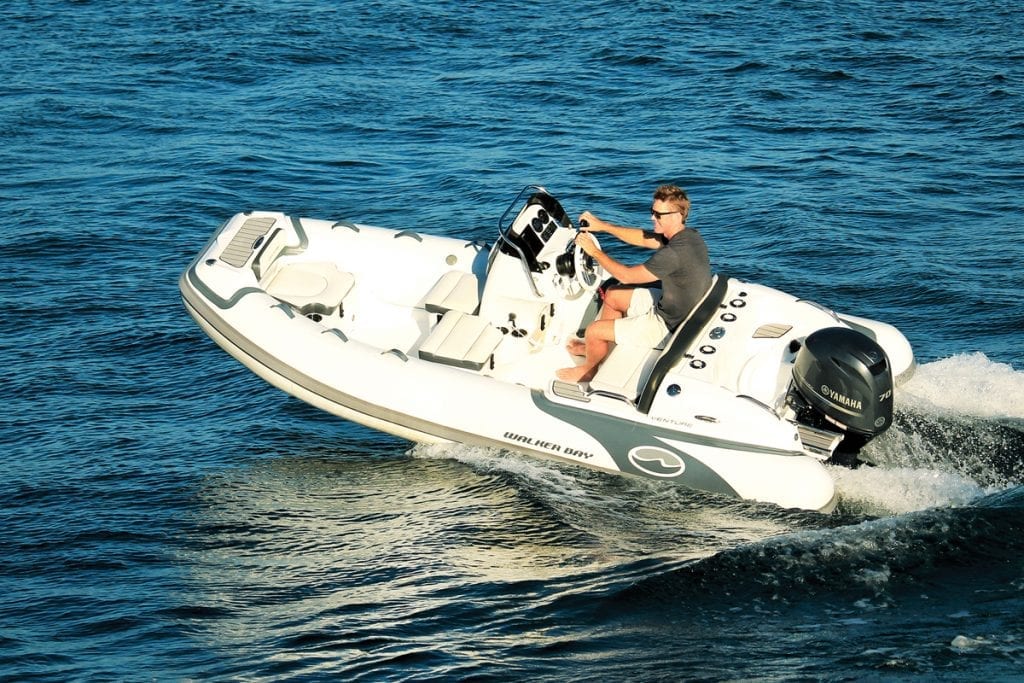
Williams Sportjet 435
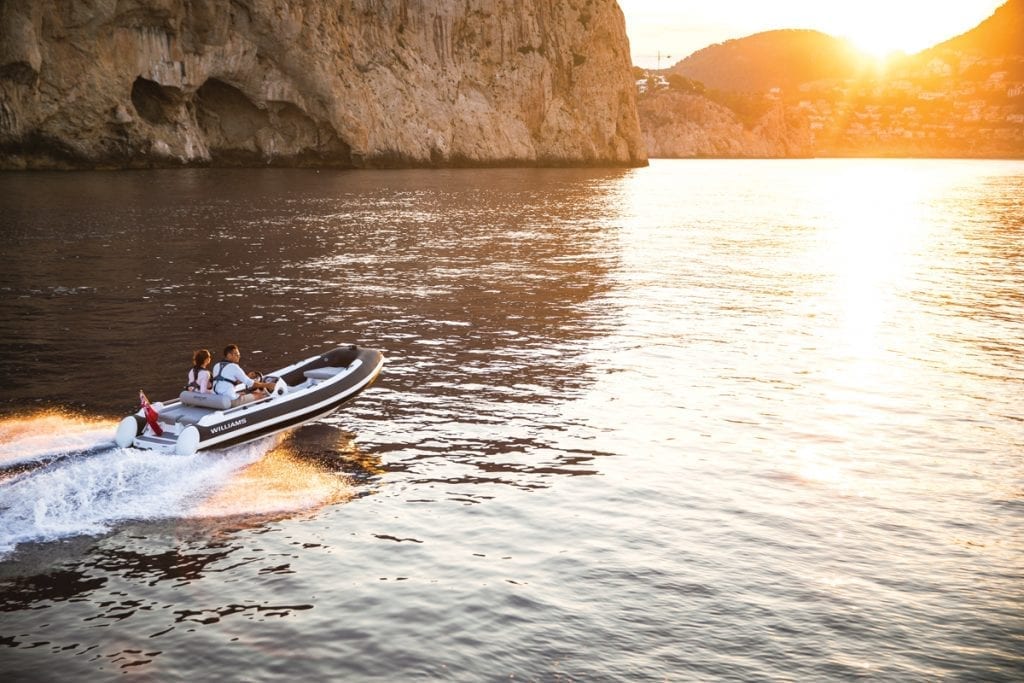
Recommended
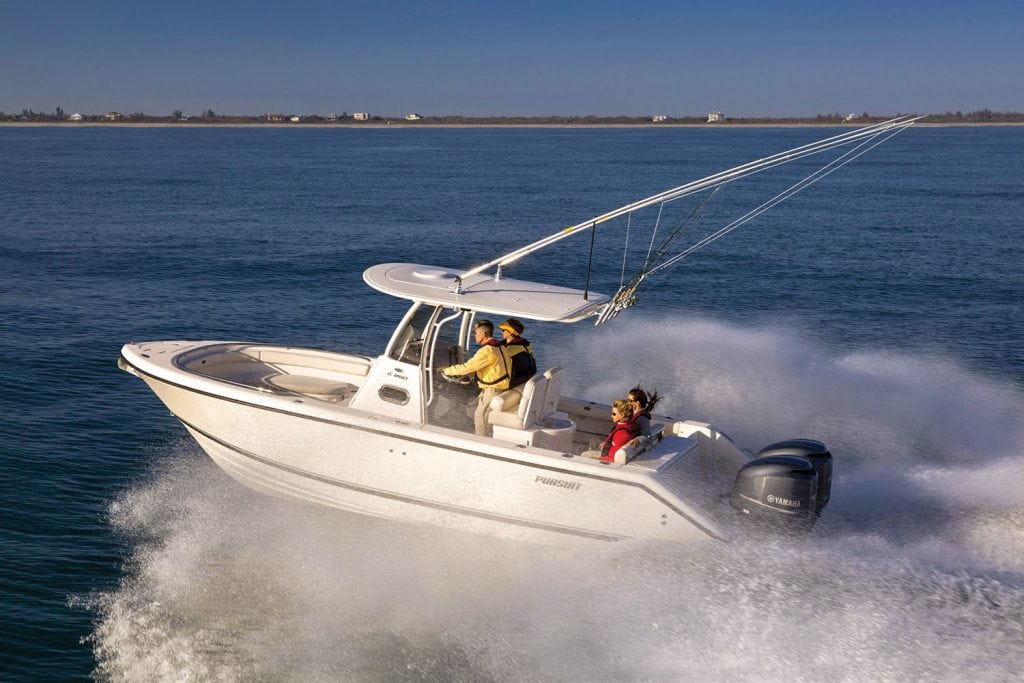
Pursuit C260
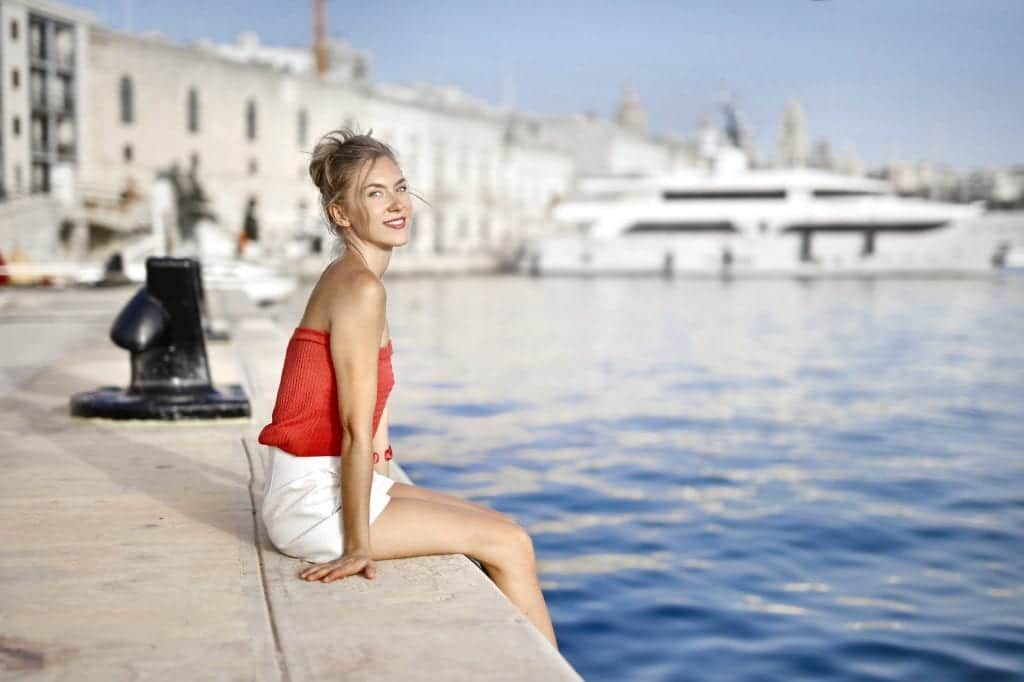
Shallow Water Blackout and Electric Shock Drowning
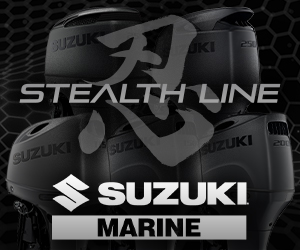
Don't miss it

Raymarine Announces Trade Up Sales Event

Outboard Motor Maintenance Fundamentals: Keep Your Engine Clean And Vibrant

Unexpected Inflation Headline! Who Should You Believe?

Discover the Grady-White Freedom 415: Unmatched Value in Modern Boating

St. Simons Island Boating: Embark on a Luxury Adventure

Boating Safety Practices for Every Boater: Better Etiquette Tips
- Privacy Policy

1591 E. Atlantic Blvd, 2nd Floor Pompano Beach, FL 33060 Office: +1 (954) 522-5515 Fax: +1 (954) 522-2260 Contact us: [email protected]
Email address
© 2024 Southern Boating Media

G23 Paragon
NEW Starting at $435,200
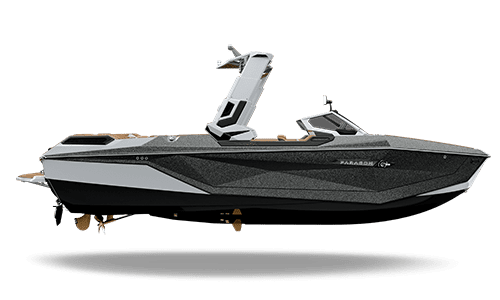
G25 Paragon
NEW Starting at $461,746

Super Air Nautique G21
Starting at $212,722
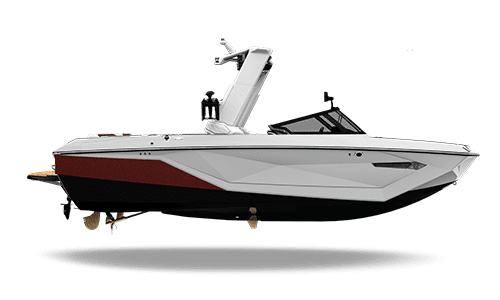
Super Air Nautique G23
Starting at $232,934
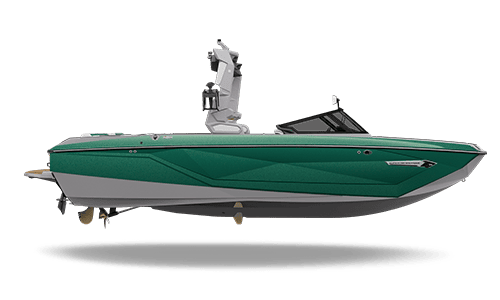
Super Air Nautique G25
Starting at $252,717
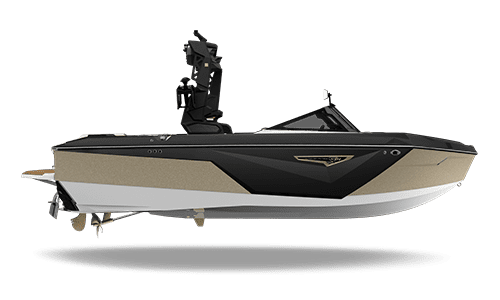
Super Air Nautique S21
Starting at $183,047
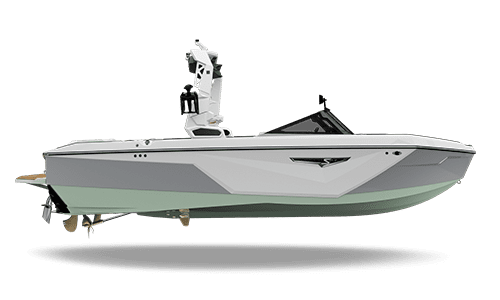
Super Air Nautique S23
Starting at $198,316
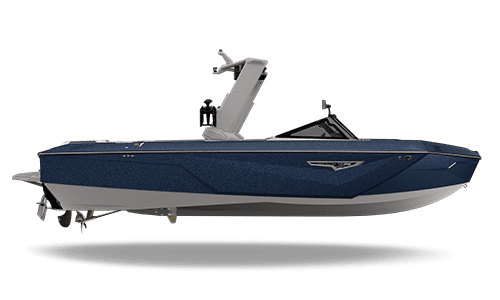
Super Air Nautique S25
Starting at $225,606
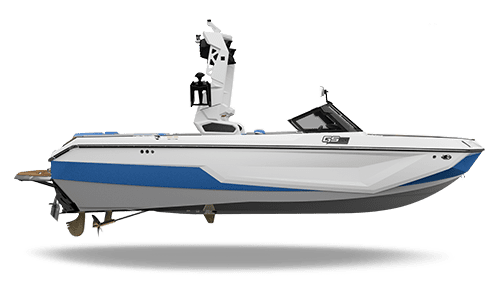
Super Air Nautique GS20
Starting at $159,803
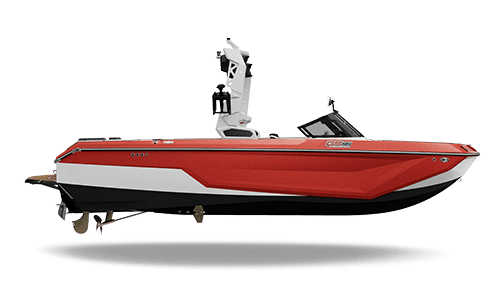
Super Air Nautique GS22
Starting at $175,937
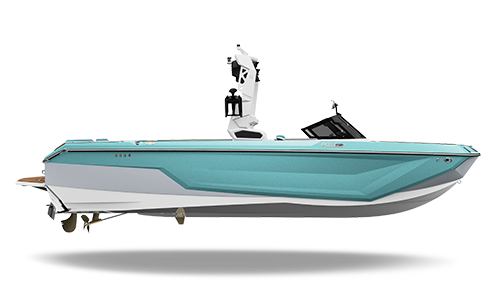
Super Air Nautique GS24
NEW Starting at $199,372
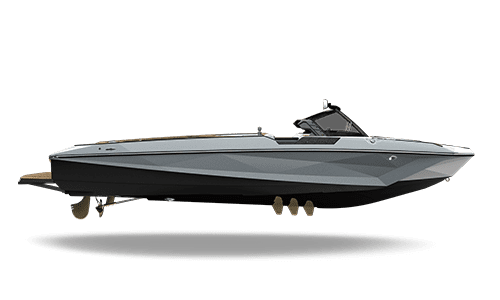
Ski Nautique
Starting at $162,588
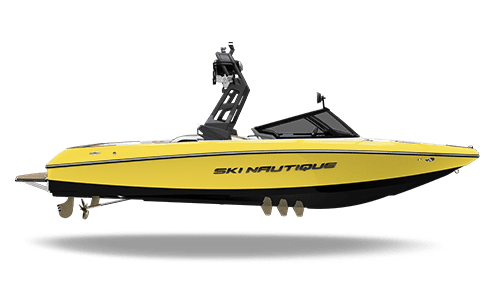
Ski Nautique 200
Starting at $108,724
Starting at $435,200
Starting at $461,746
- New For 2024
- The Nautique Difference
- Press Releases
- Nautique Events
- Made in America Book
- Compare Boats
- Overview Videos
- Nautique Surf System
- Coastal Edition
- Nautique Network
- Team Nautique
- Nautique History
- Yacht Tender
- Nautique Gear
- Owner's Manuals
- Contact Nautique
- Design your Nautique
Nautique Super Yacht Tender Division
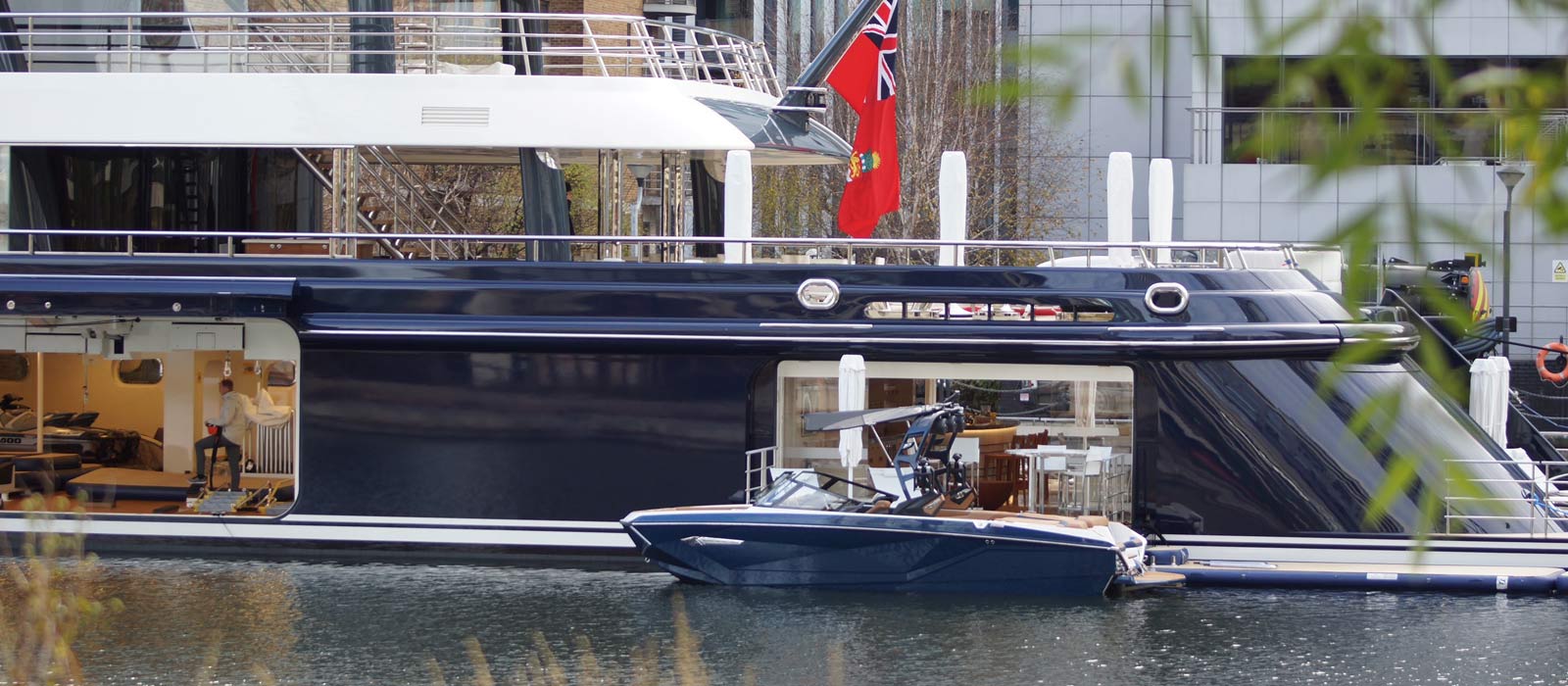
Those who aspire to have the best in a watersports boat gravitate towards quality, performance and luxury.
Each super yacht presents a unique opportunity for Nautique to create a boat that is customized for specific circumstances. Whether it’s custom lifting points, distinctive tower folding options or removable windshields, the team at Nautique has the ability to seamlessly integrate our boats for their new home aboard any yacht.
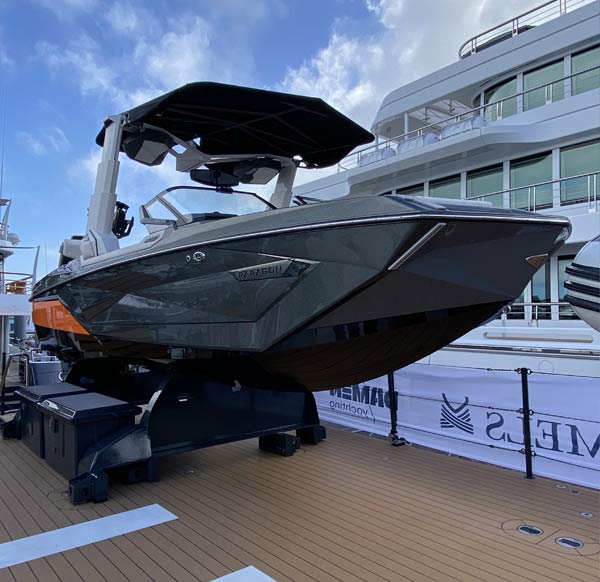
“We looked at the 3 watersports tender manufacturers and easily settled on Nautique for the build quality, appearance and warranty. Our tenders were delivered on time and the support and care we’ve had since is second to none.”
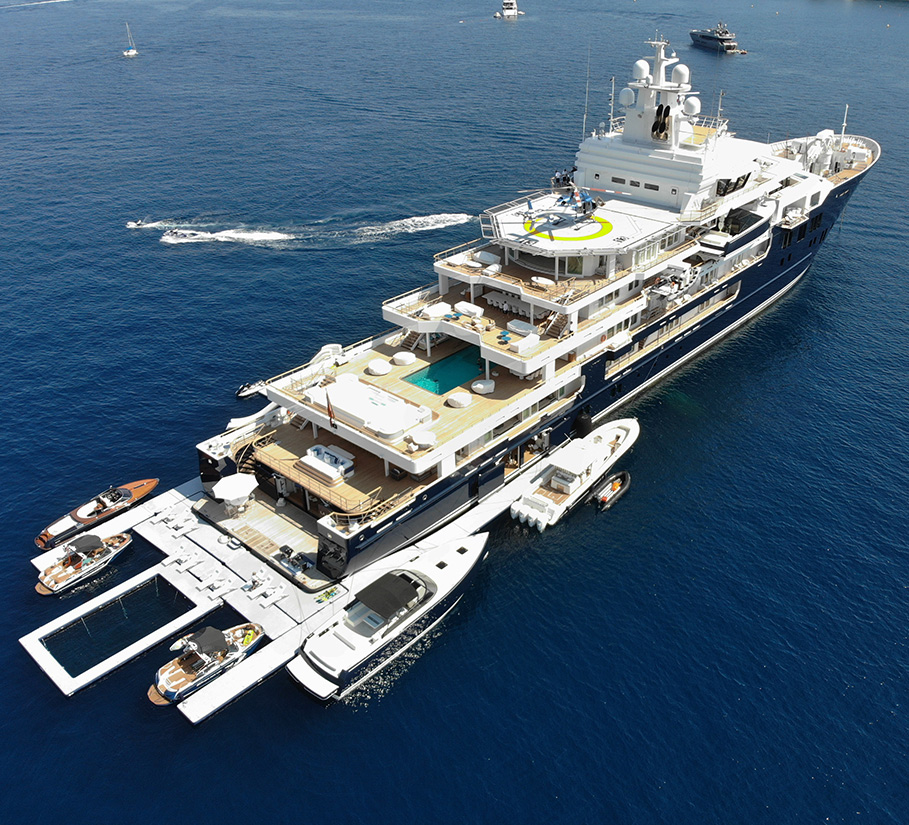
About Nautique Boat Company:
Nautique Boats is a world-renowned manufacturer of award-winning luxury wakesurf, wakeboard and water ski boats. We are a seasoned boat manufacturer that has been in business for 95 years and continue to innovate and differentiate ourselves from the competition.
All Nautique boats are designed to offer our customers: • Superior Quality Build • Inspiring Craftsmanship • Performance that’s Second to None • Luxurious Features/Ammenities • Factory Authorized, Five-Year Warranty
Since each super yacht possesses unique characteristics, our approach guarantees that all customers receive the attention required to create the perfect Nautique. To enhance the experience for yacht owners and captains, Nautique ensures that all clients enjoy a seamless and hassle-free customization process for their Nautique. Throughout every stage of the journey, our team is available to facilitate and support the process, from the initial consultation to the design, production, and worldwide delivery of your Nautique, ensuring that all logistical aspects run smoothly, regardless of your chosen destination.
For more information and to schedule a consultation, please fill out the form below.
Which Nautique model are you primarily interested in?
I would like to subscribe to:
What type of boating activity are you most interested in:
I am new to boating?
I am new to Nautique?
- Website Accessibility
- Access machine-readable files created and published by Anthem BCBS

IMAGES
VIDEO
COMMENTS
Yacht tenders come in a range of shapes and sizes and are dependent on a variety of factors, from the owners' use of the vessel, to how large the yacht is to what activities guests wish to carry out. Tender boats are often divided into the following categories: RIBs, Limousines, Custom Tenders, Jet Tenders, Electric Tenders, Sport and Fishing ...
Tender boats support the needs of the larger craft, aka the "mothership", performing tasks that the bigger boat cannot. Hence the name "tender". For instance, they are often used to ferry passengers back and forth from the yacht. While tenders are functional, they are also often designed to entertain and exhilarate (except for life ...
Our Falcon Tender series ranges from 9 feet 6 inches to 15 feet 10 inches and can carry four to nine people, or 500 to 2,645 pounds. This series is the smaller range of tenders that we offer, but make no mistake — they have the power to get the job done and look good doing it.
Classic Daysailer. Rigid Open Classic Stow. Strip back the layers of modernity that clothe large motor yachts and delve into a tactile sailing experience with a classic daysailer. Built a short distance upriver from SYTT, the Spirit R30 is a daysailer that marries cinematic elegance with unparalleled craftsmanship.
A: A jet tender is a type of yacht tender that is powered by a jet drive system, using water propulsion instead of an outboard or inboard engine. Q: What is a classic tender? A: A classic tender refers to a traditional-style yacht tender, often made of wood, with a timeless design and elegant features.
Exploring the Unique Sailing Yacht A Tender. The Sailing Yacht A tender is a marvel of modern design and technology. With its distinctive features, it stands out as a symbol of luxury and innovation. Special Features. From state-of-the-art navigation systems to luxurious interiors, the Sailing Yacht A tender offers a once-in-a-lifetime boating ...
About 60 tenders of all stripes and sizes were on display at last month's Monaco Yacht Show, from Novamarine's Black Shiver 160, stretching 56 feet in length (too large for most superyachts to ...
Consider the size of your yacht and the typical number of guests you have on board. A tender that is too small may be uncomfortable and impractical, while a large tender may take up excessive space on your yacht. ... Yacht tenders are available in various materials, each with pros and cons. The most common materials used for tenders are ...
The smallest sailing yachts—7 metres (23 ft) and below—must tow their tenders, which are typically dinghies. Larger yachts may have davits to lift the tender out of the water, typically above the transom; this would be a typical approach for a motor yacht, which cannot tow a tender at its cruise speed. Other storage schemes are storage on ...
With so many yachts and yacht tenders on the market, Argos Nautic is here to help explore your options and choose the best boat to set sail on. ... But a yacht is appointed to a higher standard than typical pleasure boats, with nothing but the highest-quality luxury amenities. Things like air conditioning, watermakers, and lots of storage space ...
Mar 15, 2024. Original: Aug 5, 2016. A rigid-bottom inflatable with a powerful outboard is the tender of choice for many cruisers. Before choosing which inflatable dinghy is right for you, there are many factors to consider. Some sailors claim that the inflatable boat has killed the traditional rowing sailing tender.
The average size of open tenders built by Compass has increased by just over 20% from 8.6m in the period 2016 - 2018 to an average of 10.5m in the period from 2019 to 2021. This increase is largely attributed to the general increase in size of the motherships, but it's also due to the more versatile role a superyacht tender is required to play.
18 D-Boat 2021. This small but mighty 18 foot D-Boat 2021 is a great yacht tender or day cruiser. It's part of the new Diamond 550 series and built-in one of the most prestigious shipyards in Poland. This yacht tender offers an incredibly smooth ride and can be equipped with 115 horsepower or 200 horsepower Mercury outboard engines.
With these factors in mind, the yacht's tender must be able to transport individuals to dry land with minimal fuss and optimal comfort, hence the attractiveness of limousine and chase tenders. Of course, larger tenders require suitable on-board storage. ... suggested it was important for owners to be innovative and deviate from the typical ...
The X-TENDER GT150 has also been designed and engineered to require fewer added on parts that are screwed or bolted to the main structure. Anyone that has experience with typical yacht tenders knows that the screws and bolts eventually loosen, rattle, and fail.
10' Navigator. Designed for optimal sailing and rowing performance, and can be used as a yacht tender for up to 3 people at a time. A convenient size for suspending from davits or sidemounting on your yacht's transom, and excellent for towing. Weighs only 90 lbs in standard fiberglass, or 75 in our lightweight kevlar foam-core composite!
The boats weighs 68kg for the 3.3m or 74kg for the 3.5m, while the sailing components add just 15kg. Both are also available in carbon versions (a NZ$4,000 upgrade). The slight catch may be the ...
SportJet 395. We've designed the SportJet 395 , a midsized Yacht Tender to fit on 20m+ yachts, perfect for ferrying up to 5 passengers from the jetty to your yacht or exploring those hard-to-reach calas, bays, and beaches. With its exhilarating low seating configuration, this incredible inflatable tender ensures that all six passengers are in ...
Versatility. Yacht dinghies serve you both as lifeboats or support boats to get the pilot, crew and guests to land or shore, but also as leisure crafts due to their versatility. The size and engine of the tender mean it can be used as a pleasure boat for sea trips with friends or family; from 4 metres upwards for the larger models.
Top 15 Tenders and RIBs Here's a look at some of today's top Tender and RIB builders and their models. A rigid deep-V hull made from composite plastic, fiberglass or aluminum—a Rigid Inflatable Boat—is an efficient high-performance planing hull, but RIBs often must be stored on a trailer or set of hanging davits.. Tougher fabrics, lighter accessories and more powerful engines have ...
Tender boats pricing. Tender boats for sale on YachtWorld are available in a range of prices from $1,690 on the relatively more affordable end up to $1,457,827 for the most expensive yachts. When evaluating your budget and the listed price of a yacht for sale, it is crucial to factor in the cost of ownership. Find Power Tender boats for sale in ...
When yacht owners look for a tender that can provide endless watersports fun and experiences, Nautique is the clear choice. Each super yacht presents a unique opportunity for Nautique to create a boat that is customized for specific circumstances. Whether it's custom lifting points, distinctive tower folding options or removable windshields ...
The typical tender boat will almost look like an elaborate version of a lifeboat. These boats are designed to ensure maximum buoyancy and stability so that passengers can enjoy a comfortable trip ...